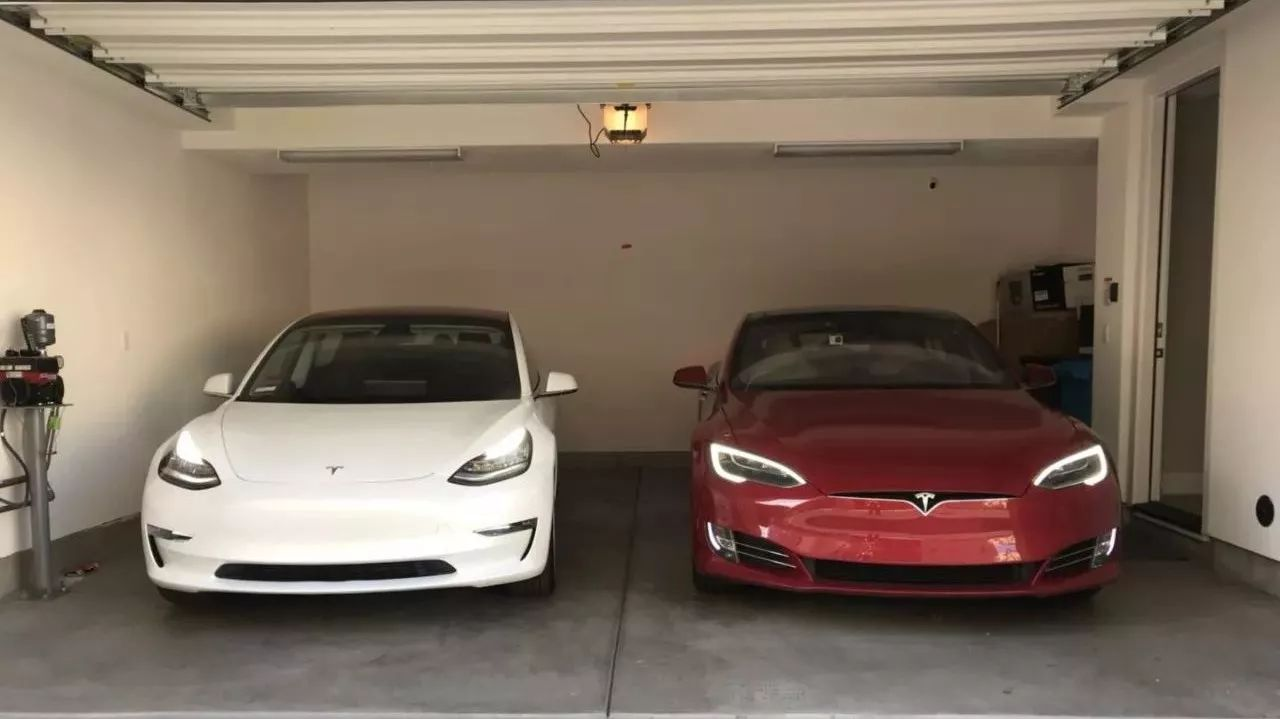The author of this article, Ryan Woo, is a Tesla enthusiast and also a member of the 42nd Garage Tesla group residing in California. He had written a lengthy article on Zhuhu sharing his experience in using Model S. On March 31st, 2016, Ryan reserved a Model 3 and recently, he mentioned it among the first group of orders, which includes Tesla old customers, and those residing in California. We are grateful to Ryan for sharing his exciting report on the delivery. This is currently the most detailed Chinese delivery report with both sentiment and restraint. The original post was first released on Zhuhu (Zhuhu ID: Ryan Woo) and 42nd Garage has obtained the authorized reprint.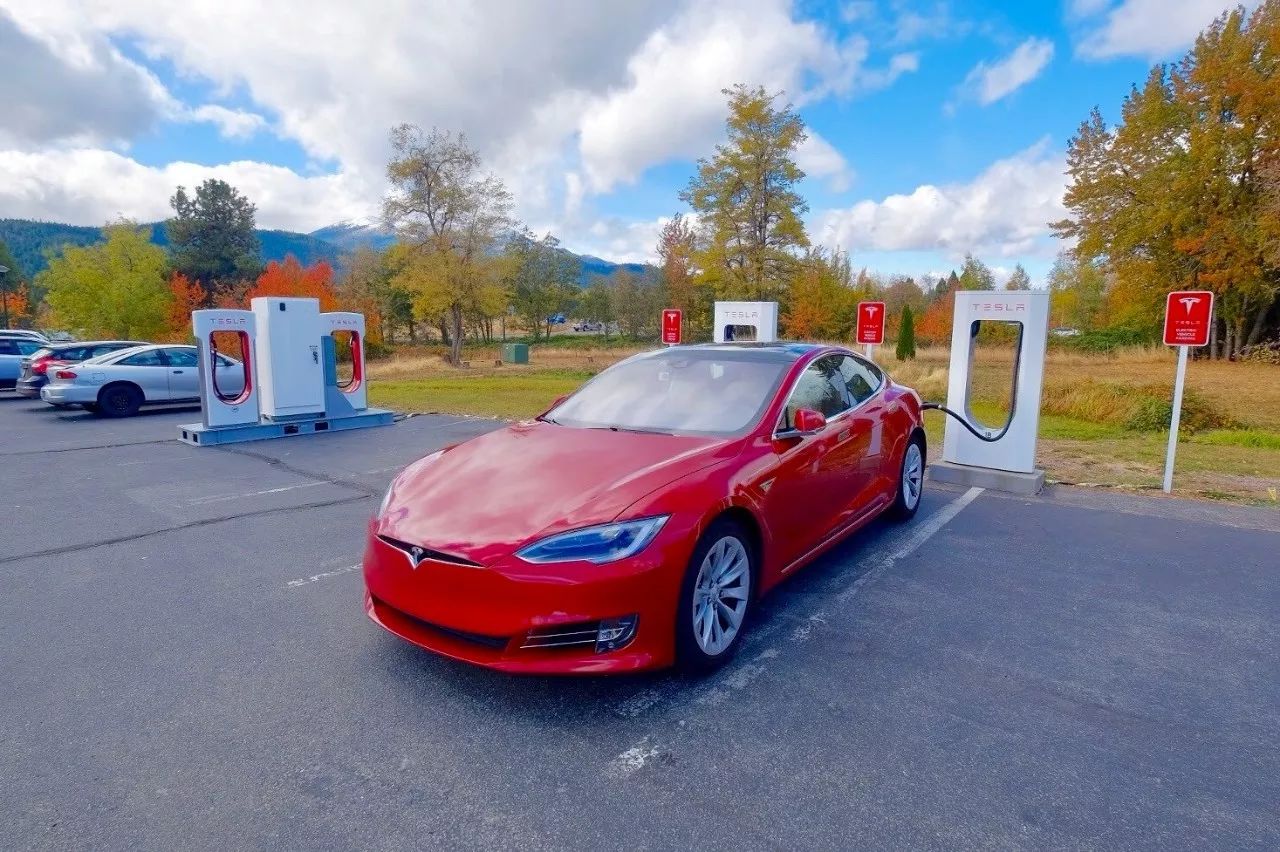
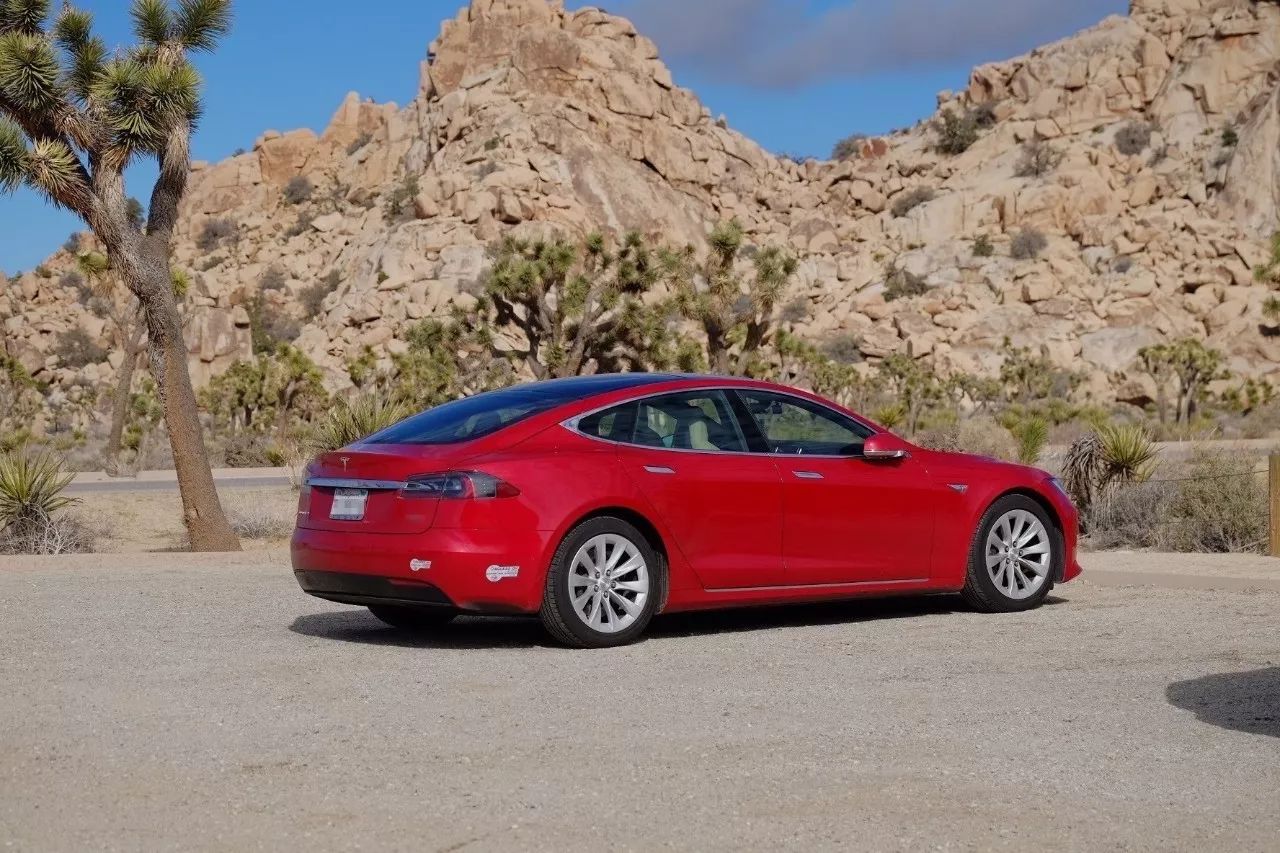
During this period, my reserved Model 3 also became clearer. In July 2017, Elon announced that the first batch of 30 Model 3s had been delivered to employees who had placed orders. As a loyal Tesla customer, my order was placed in the second group. At that time, the estimated delivery time shown on the reservation page was between November 2017 and January 2018.
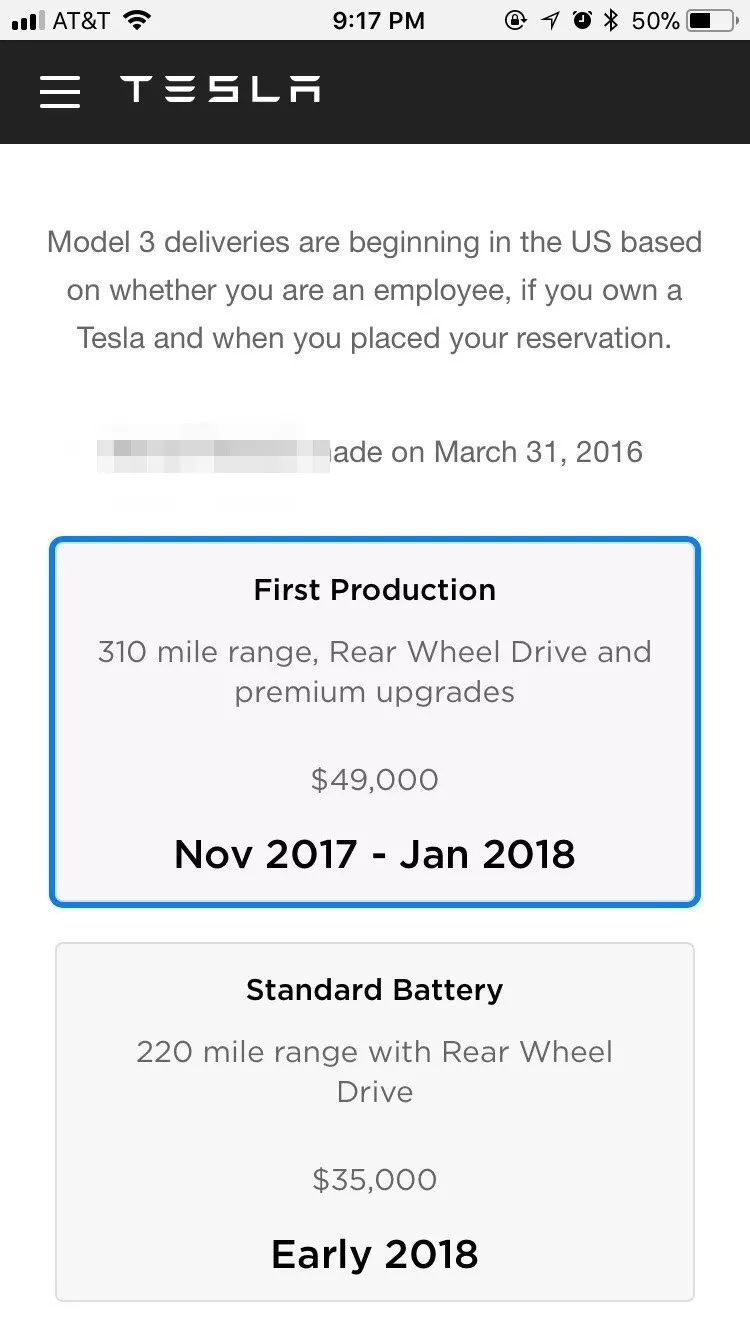
Although there were negative news such as delayed Model 3 releases and lower-than-expected production speeds, more and more Model 3s were driving on California roads. By December, it was already the second half of the expected delivery time, and I suddenly received the Tesla Model 3 configuration email.
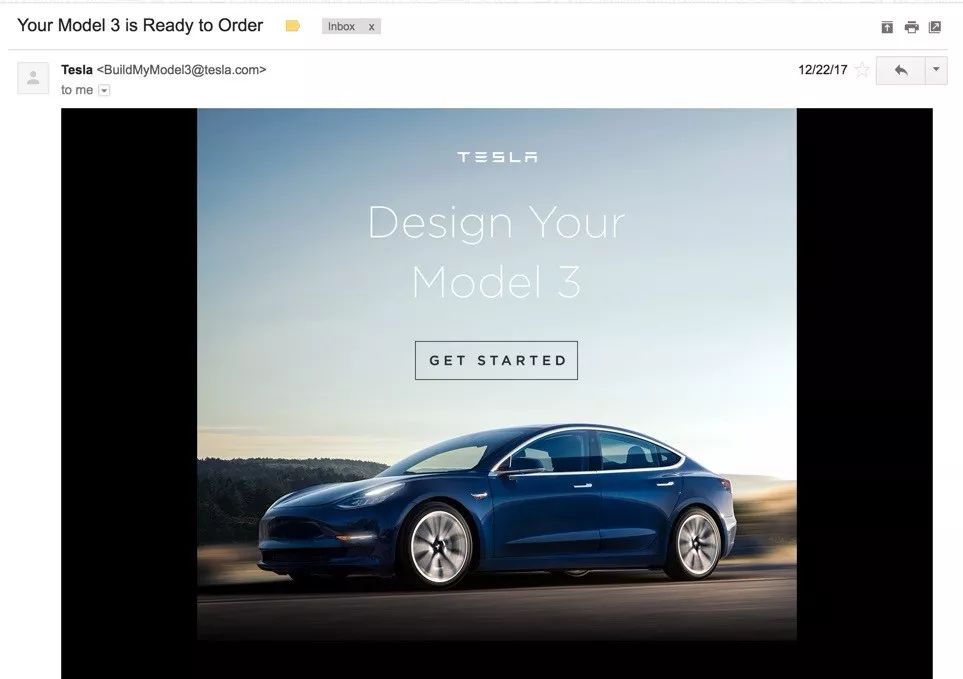
Next was choosing the configuration, paying the deposit, and handling ownership transfer, registration, and financing matters.
If you want to get your hands on the Model 3 as soon as possible, you must choose the Long Range Battery and the Premium Upgrades package.
My final configuration was as follows:
-
Long Range Battery ($9,000)
-
Premium Upgrades ($5,000)
-
Enhanced Autopilot ($5,000)
-
19″ Sport Wheels ($1,500)
-
Pearl White Multi-Coat ($1,000)
However, because I was eligible for the California State and Federal tax incentives, I could save up to $10,000 on the total cost.After submitting the order and completing all the procedures, the second waiting began. Although the expected delivery time is 4 weeks, I received a call from Tesla customer service after only two weeks, saying that I could pick up the car. It seems that Elon has indeed solved the biggest problem with the Model 3 production, and did not break his word.
On a sunny Saturday, I arrived at the newly built Tesla delivery center, finally seeing my Model 3 parked there waiting for me.
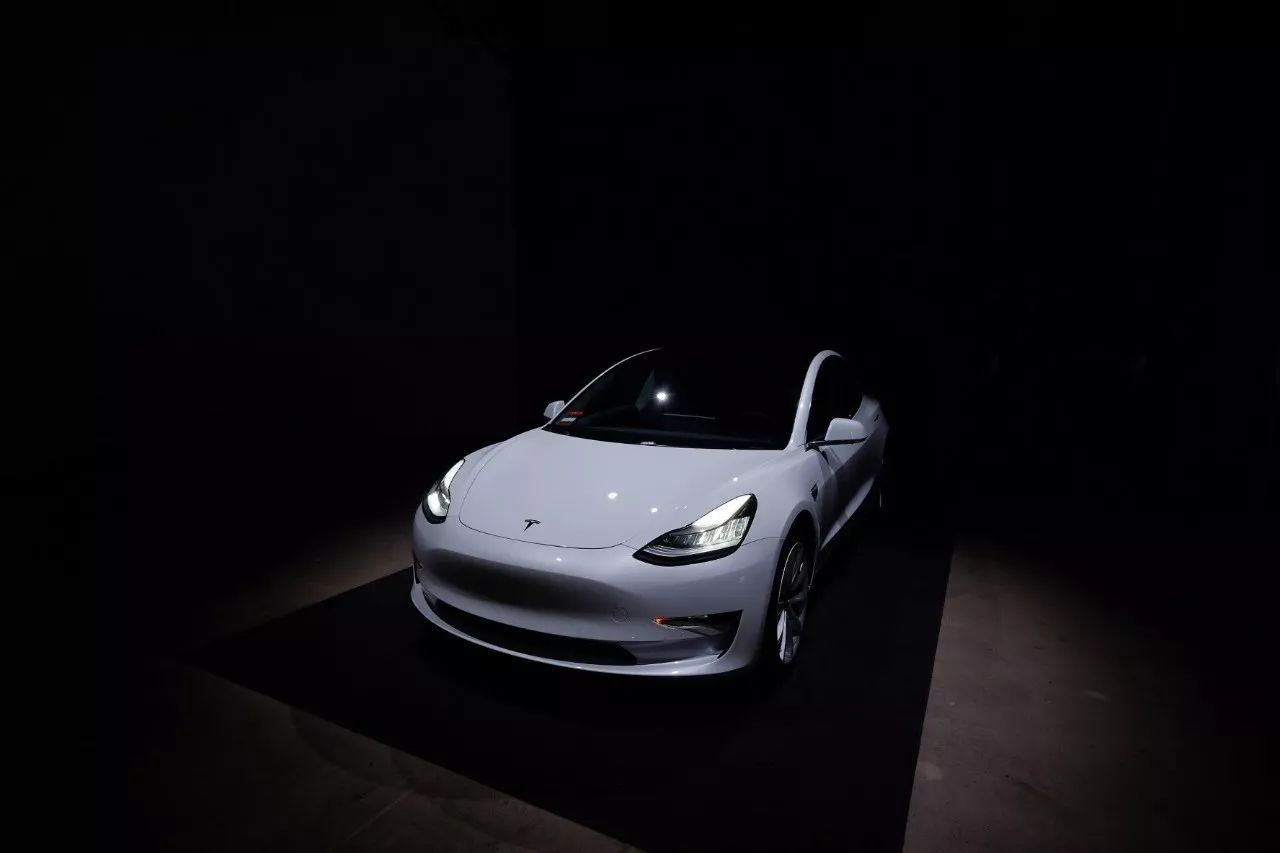
If Model S gives the impression of being fast and powerful, then the first impression of the Model 3 is more like a beautiful and delicate piece of art. With its soft lines and large panoramic sunroof, it has a compact and sleek appearance. The first impression that comes to mind is the Unibody Macbook Pro, with its solid metal cutting out perfect lines.
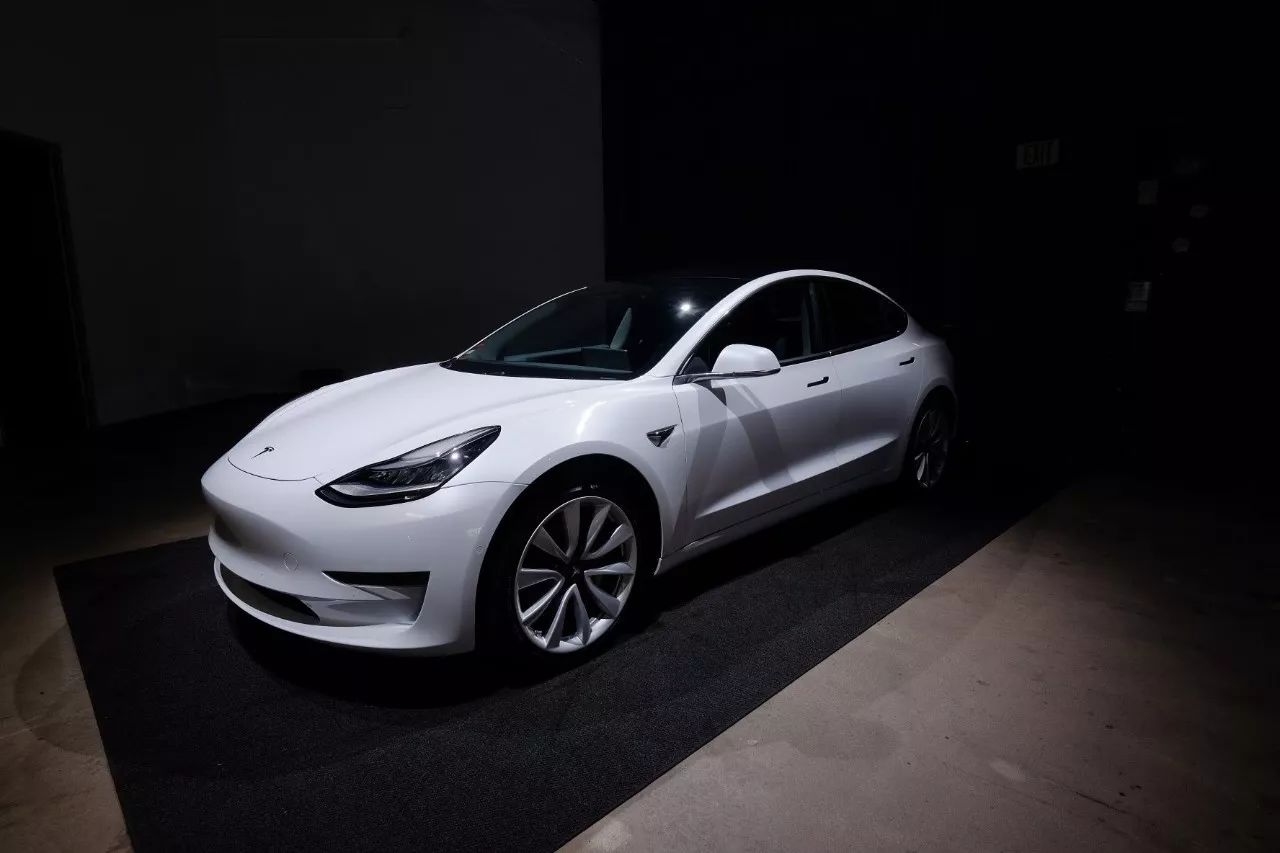
There is no grille commonly seen in gasoline cars, and the front of the car blends seamlessly into the roof.
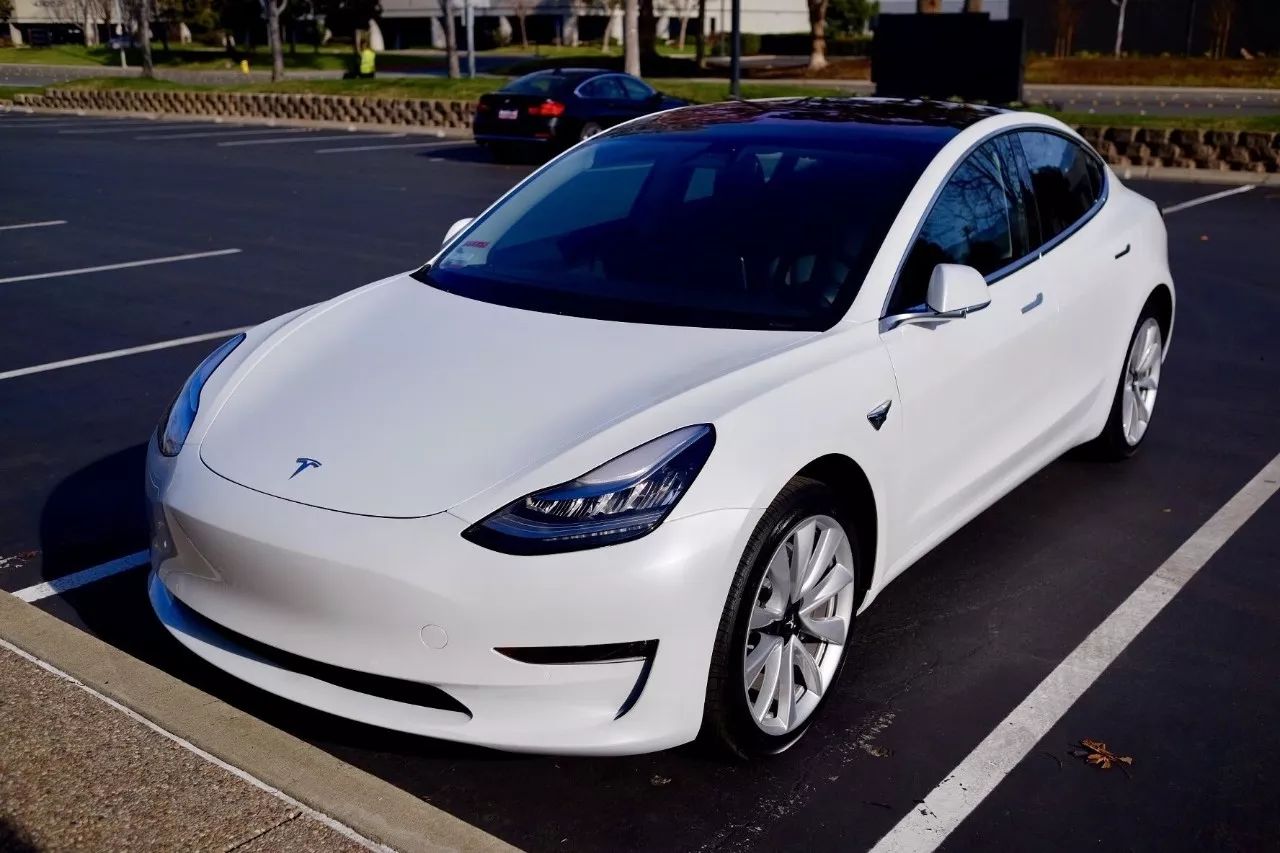
In fact, the back of the Model 3 is more like the sloping design of the Model X, but the muscular lines on both sides of the rear wheels are reminiscent of the Model S.
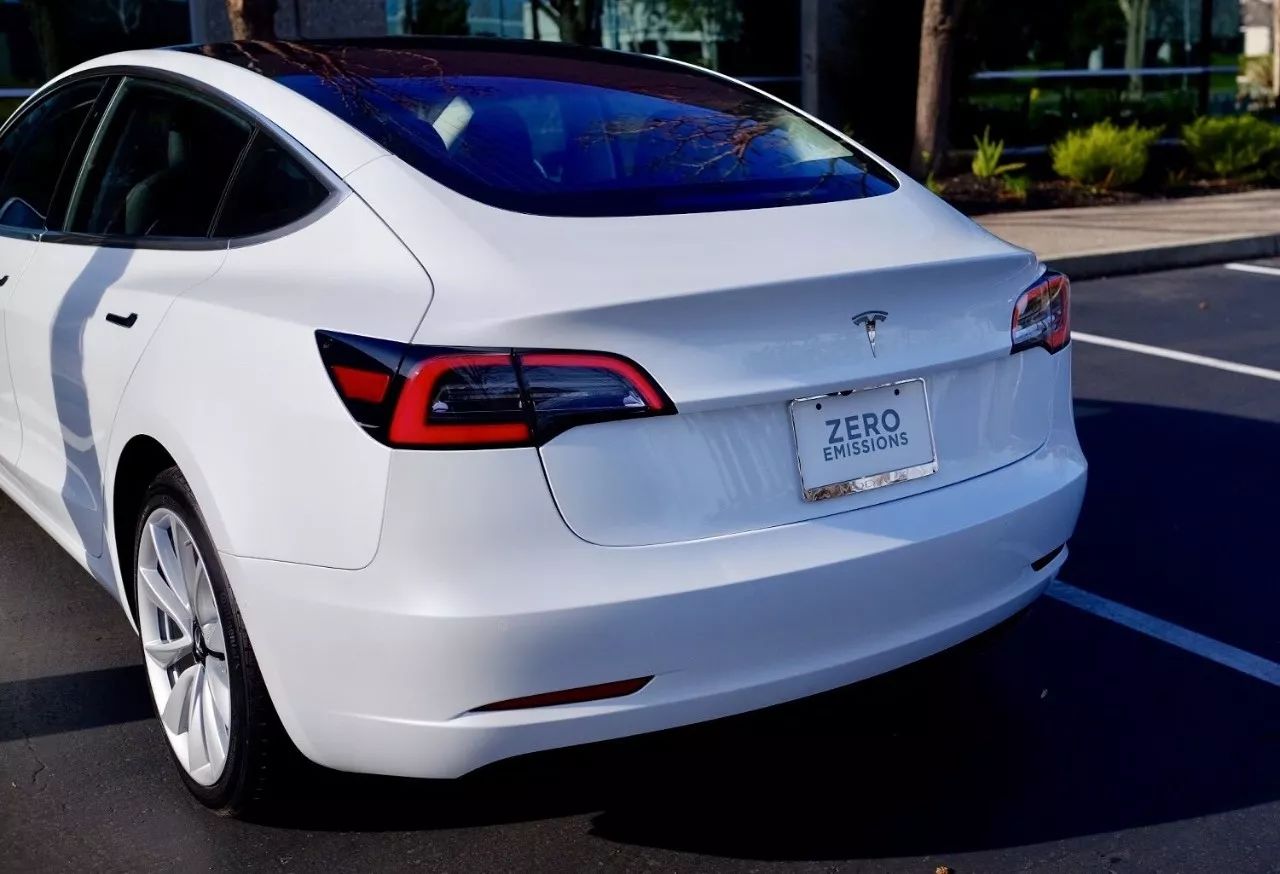
The trunk entrance, which was criticized for being too small in the test car, is not a problem in the production version. In addition, this angle reveals the enchanting curve of the panoramic glass.
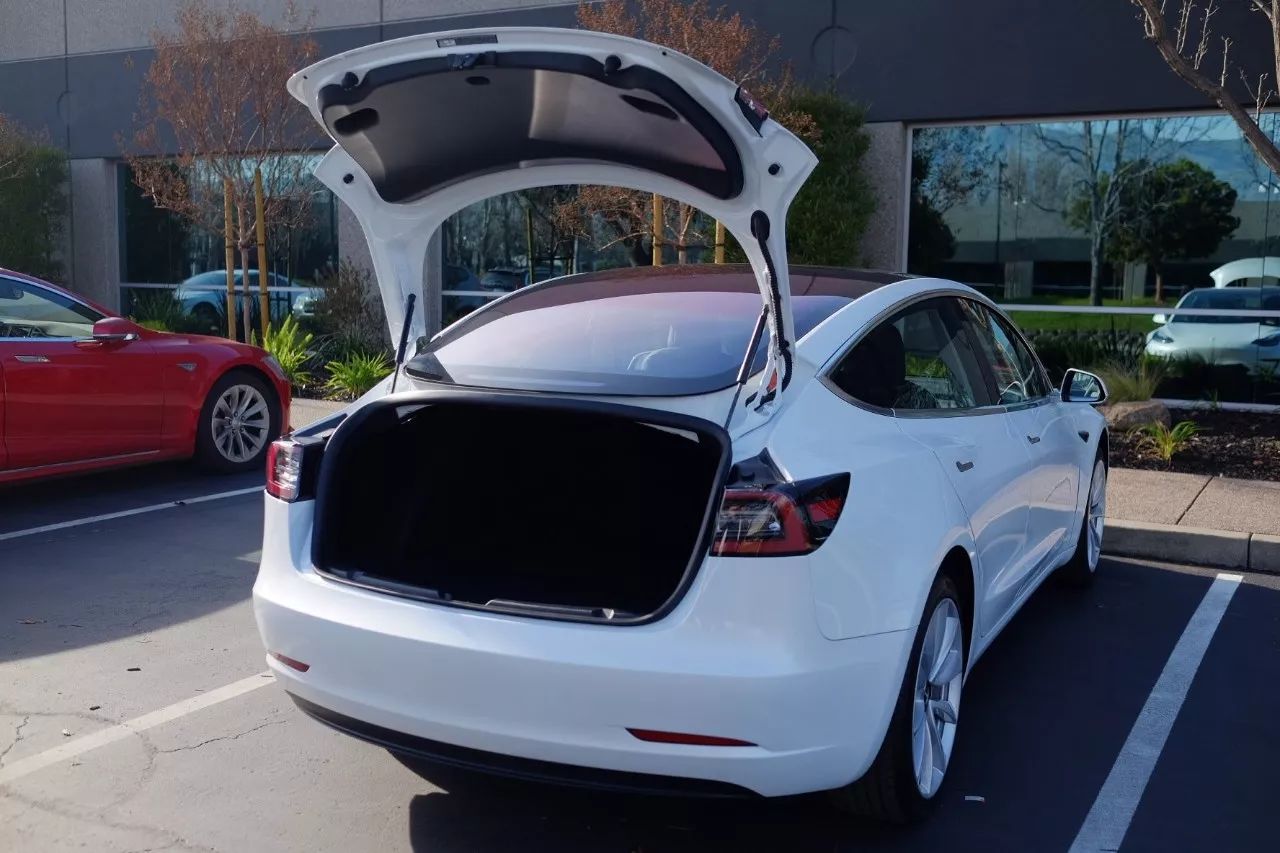

There is also a second compartment under the trunk, where more items can be stored.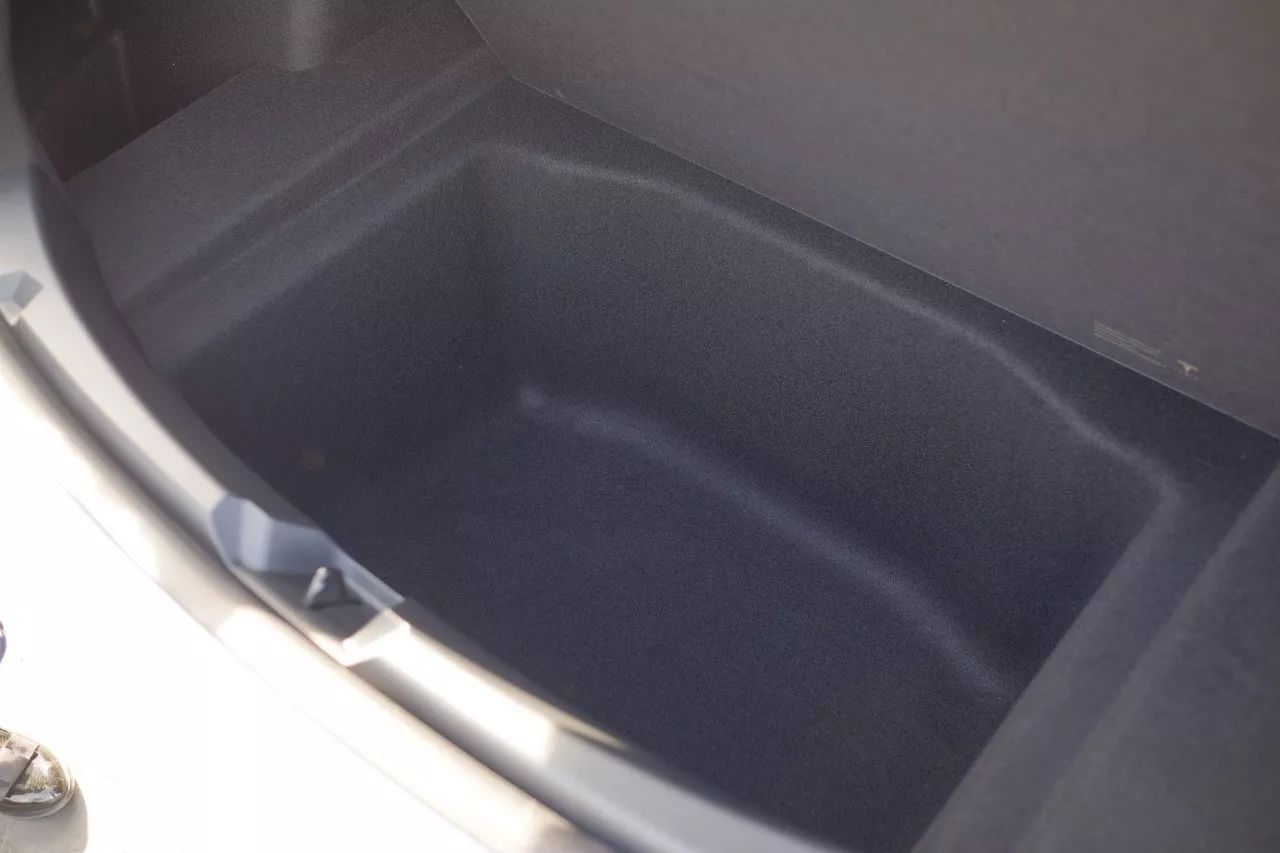
As for Tesla’s characteristic frunk, it was surprisingly “big” and easily fit at least a 22-inch carry-on suitcase.
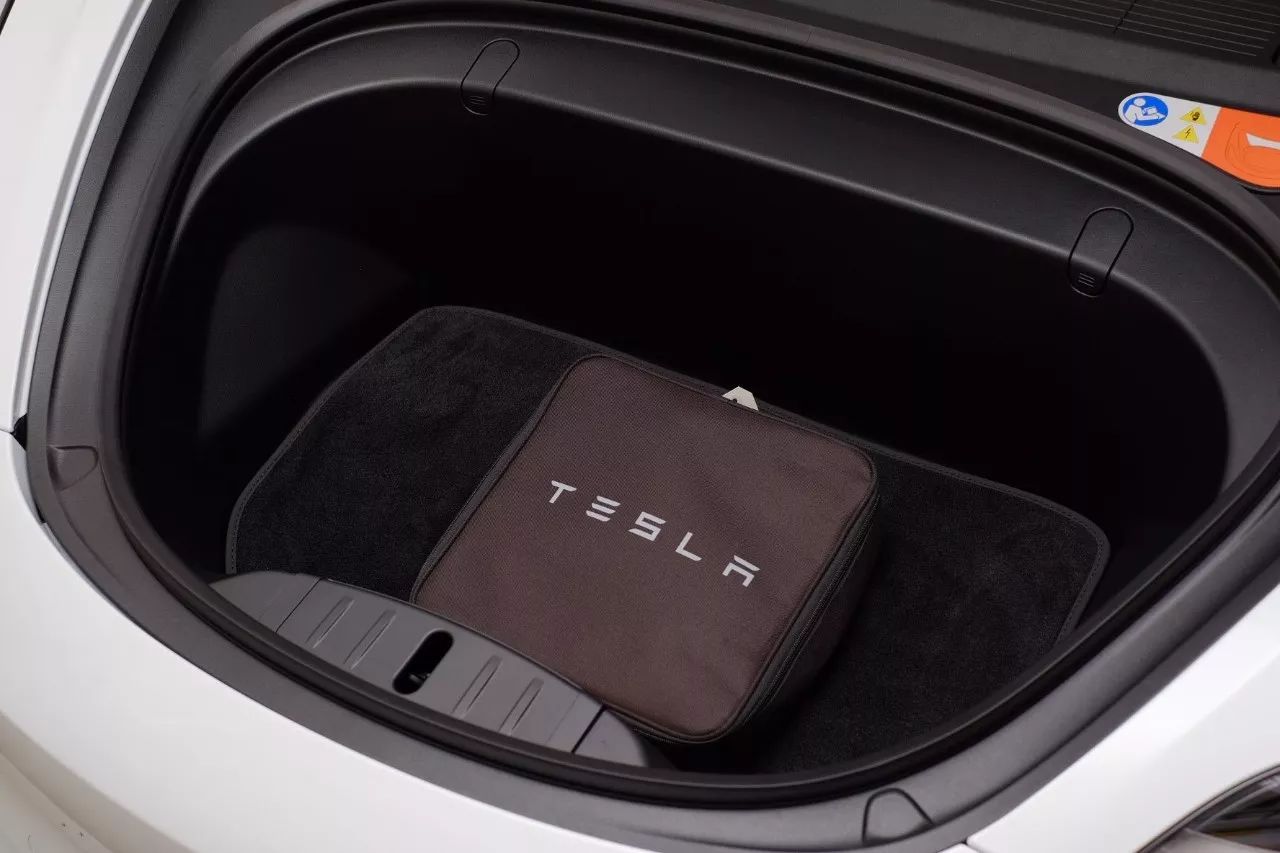
In contrast, the Model S’s front trunk can only fit items in a vertical position.
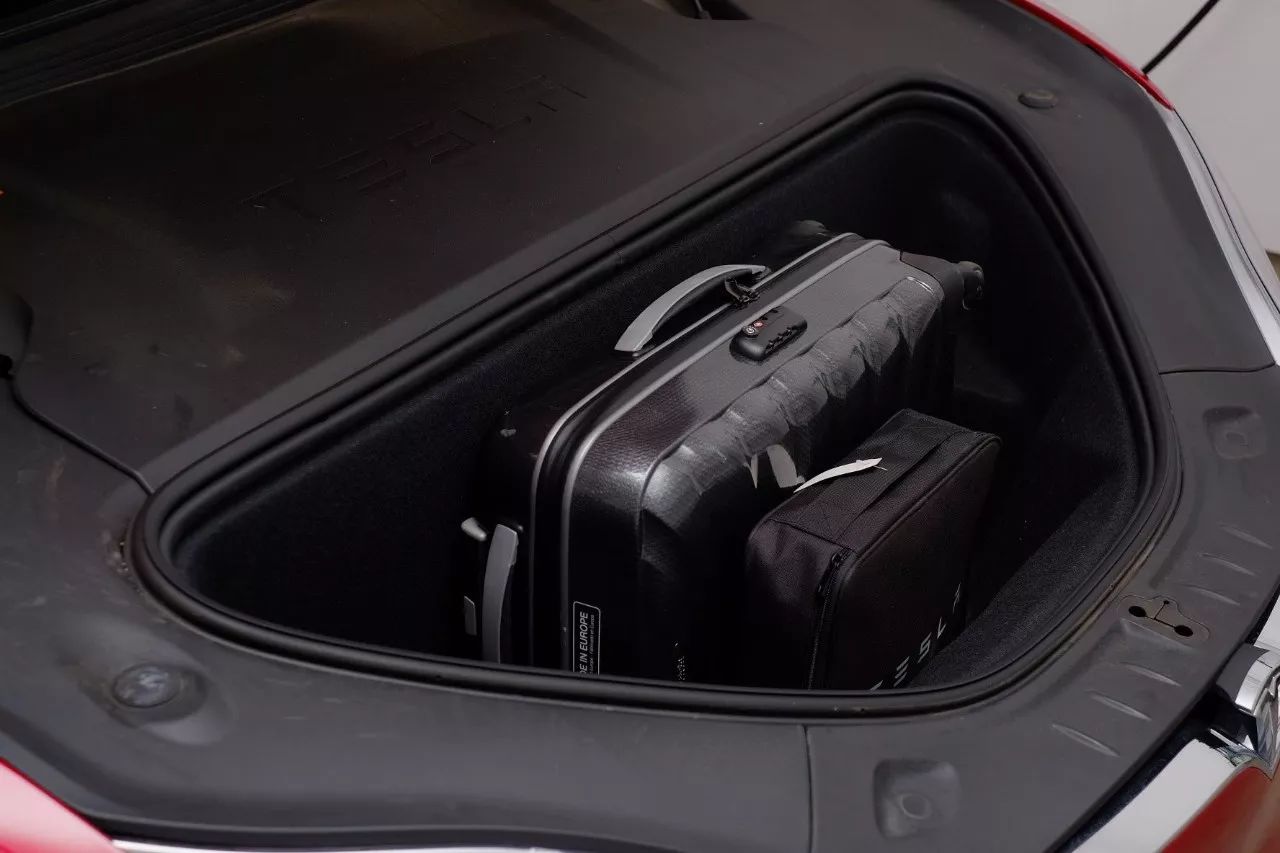
Therefore, the front trunk of the Model 3 is not just for show. In addition, there is a small detail in the Model 3’s front trunk: a hook can be opened on the side for convenient placement of a handbag.
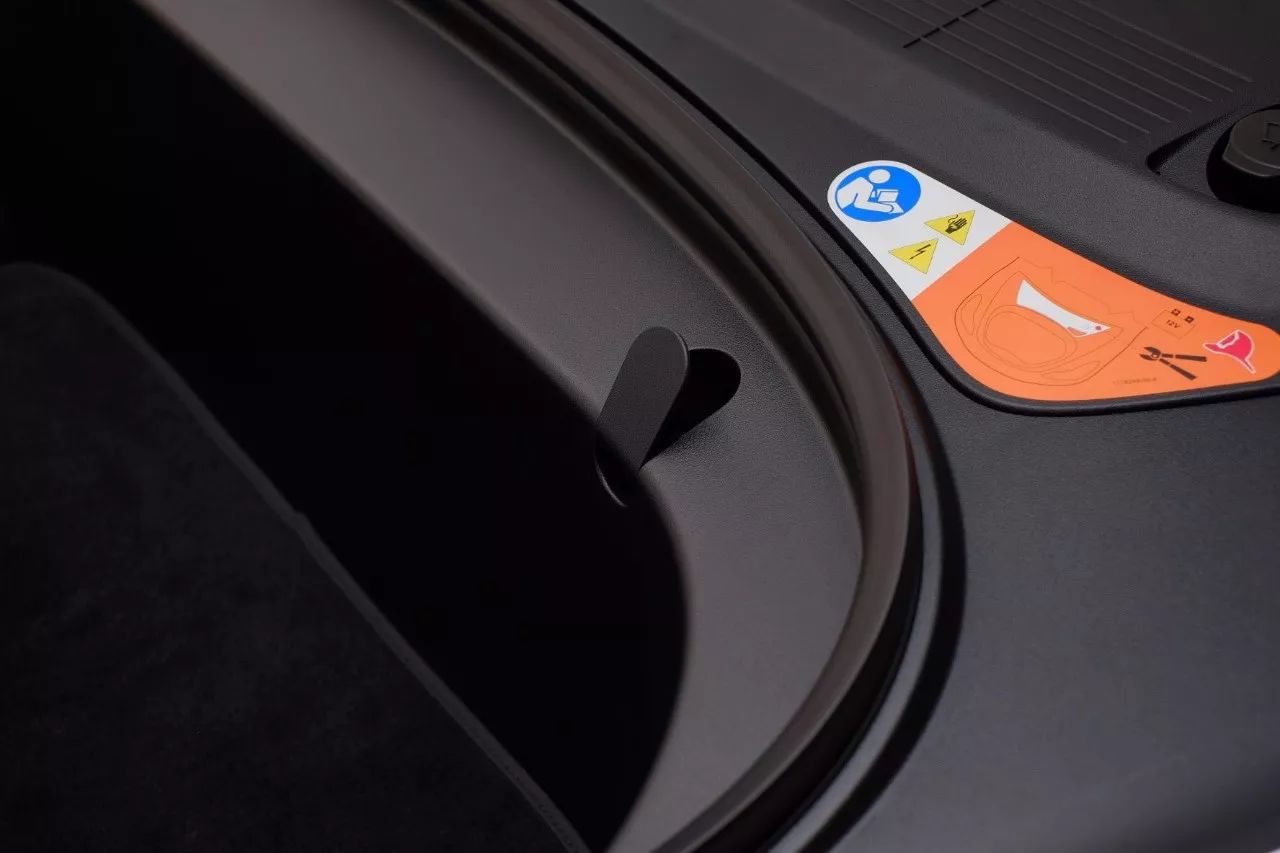
Opening the driver’s door, you can still feel Tesla’s style. The Nordic-style minimalist interior design reaches its peak in the Model 3 – in front of you are the steering wheel and console.
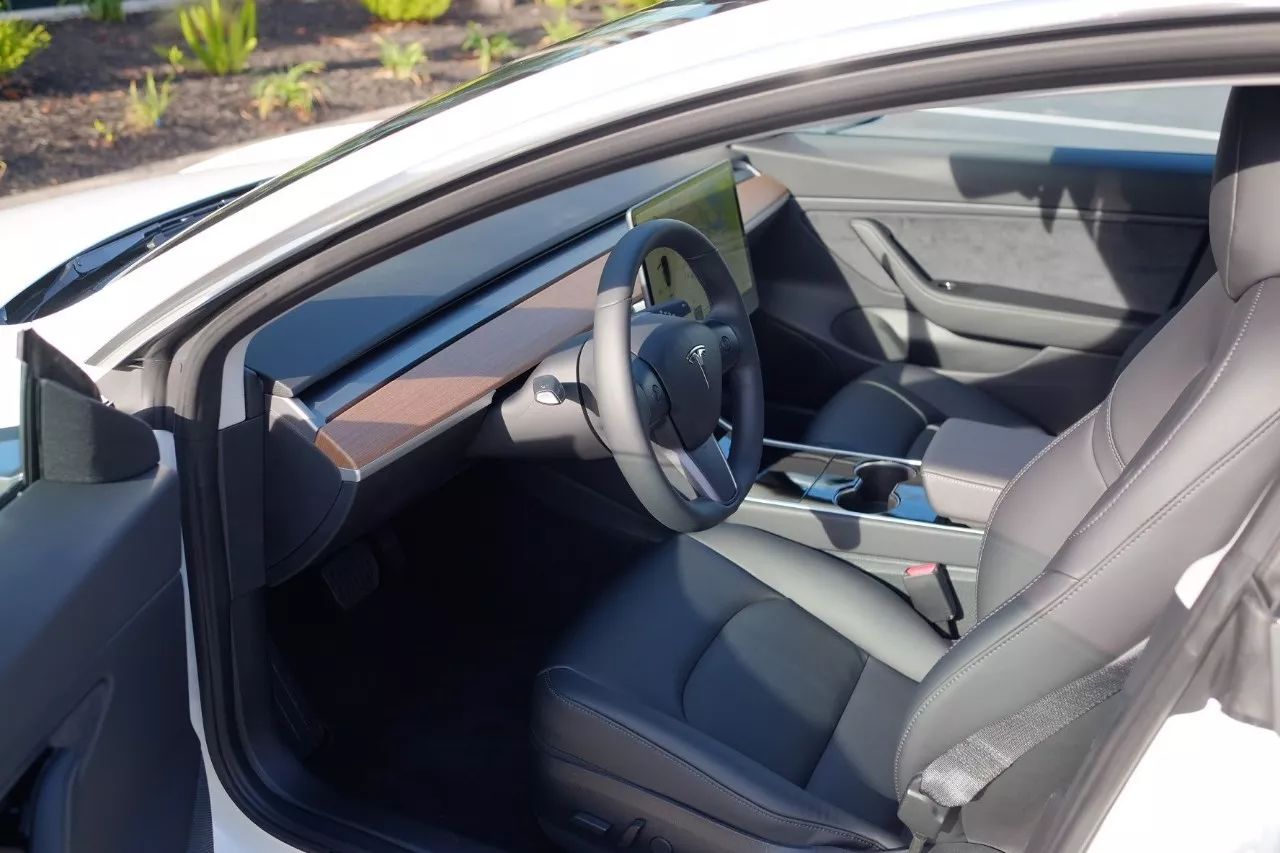
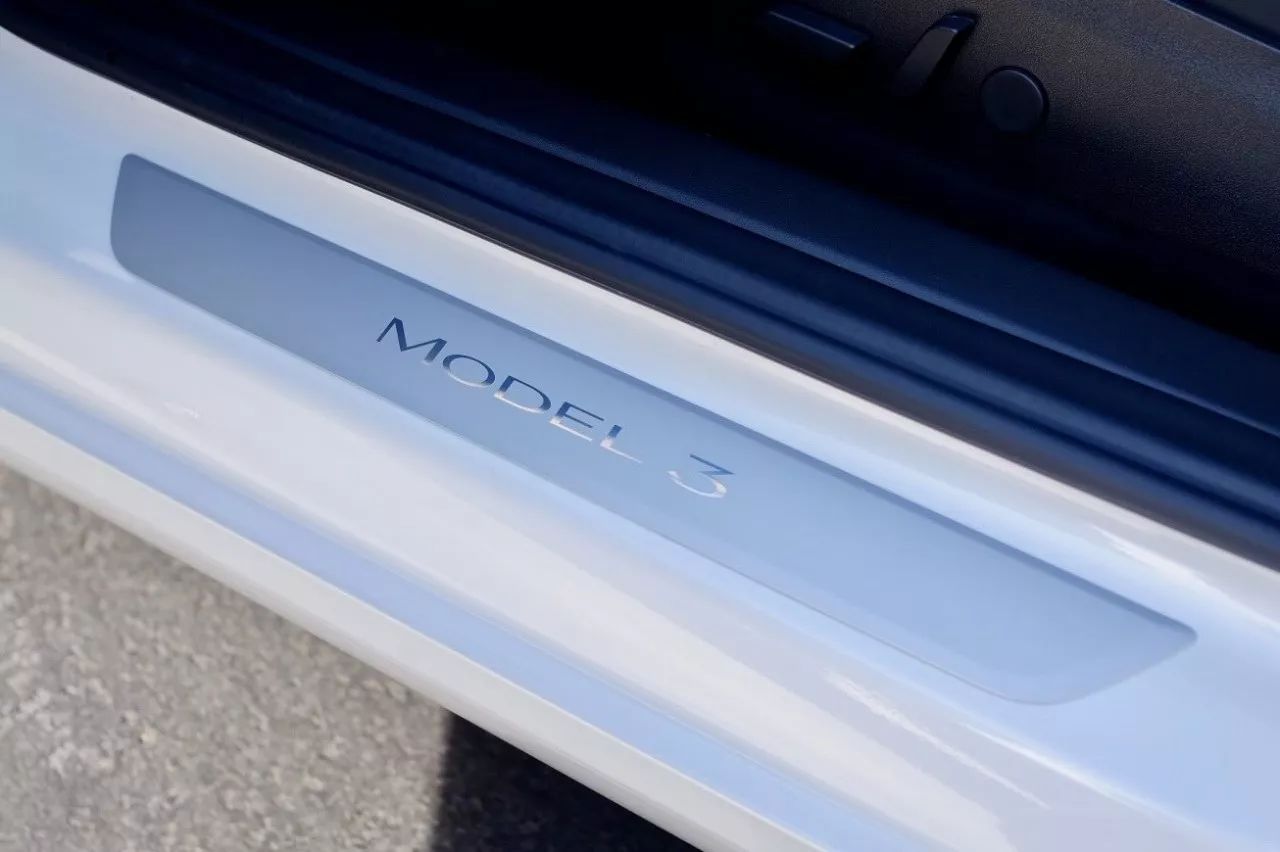
The new steering wheel of the Model 3 has two four-way scroll wheels on it, but according to my actual experience, the utility of this wheel in different interfaces and functional settings is not high.
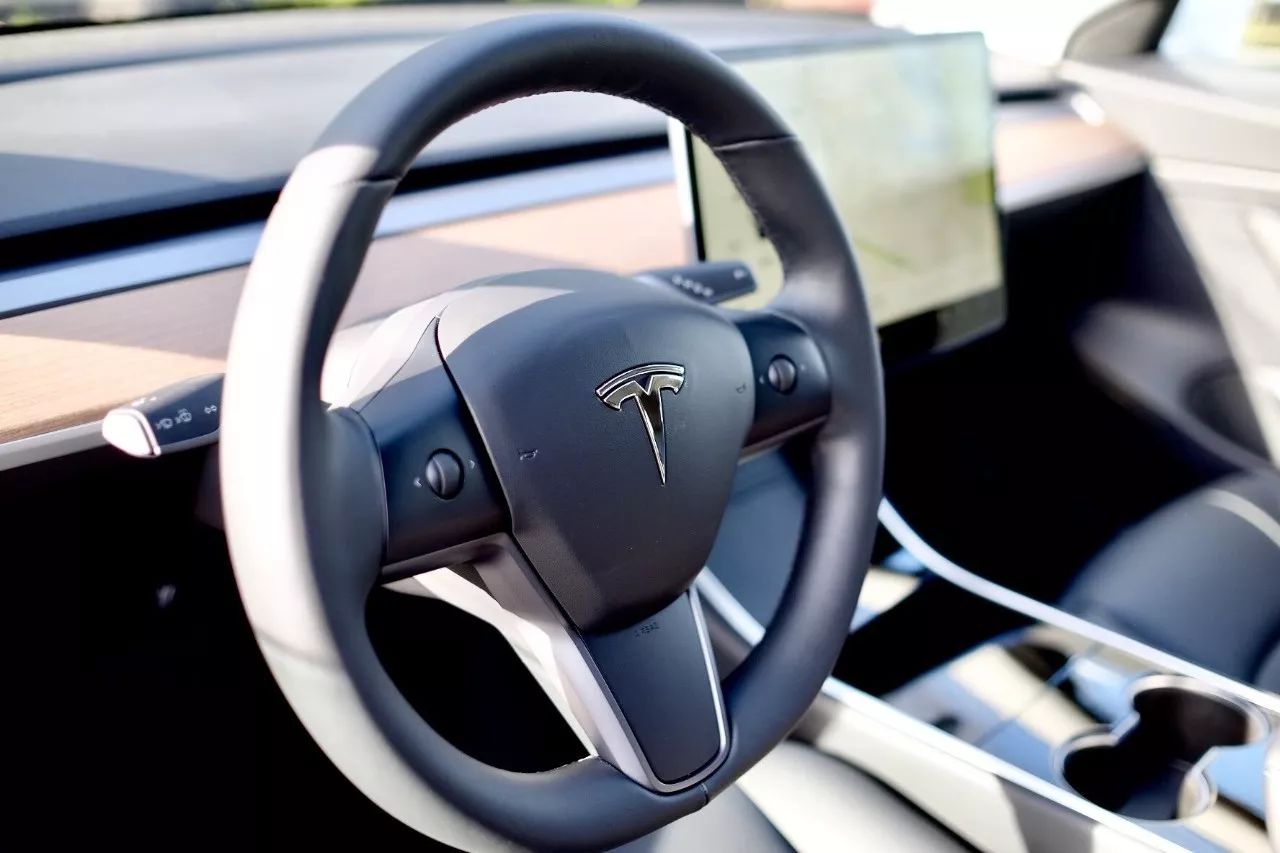 Take a closer look at the material of the front panel. The top layer is made of faux leather, followed by a layer of metal, then an unprocessed layer of wood, and the bottom layer is also made of metal. The air conditioning vent is located between the plastic and wood layers. The wood has obvious grain patterns, feels very soft, and complements the surrounding gray color.
Take a closer look at the material of the front panel. The top layer is made of faux leather, followed by a layer of metal, then an unprocessed layer of wood, and the bottom layer is also made of metal. The air conditioning vent is located between the plastic and wood layers. The wood has obvious grain patterns, feels very soft, and complements the surrounding gray color.
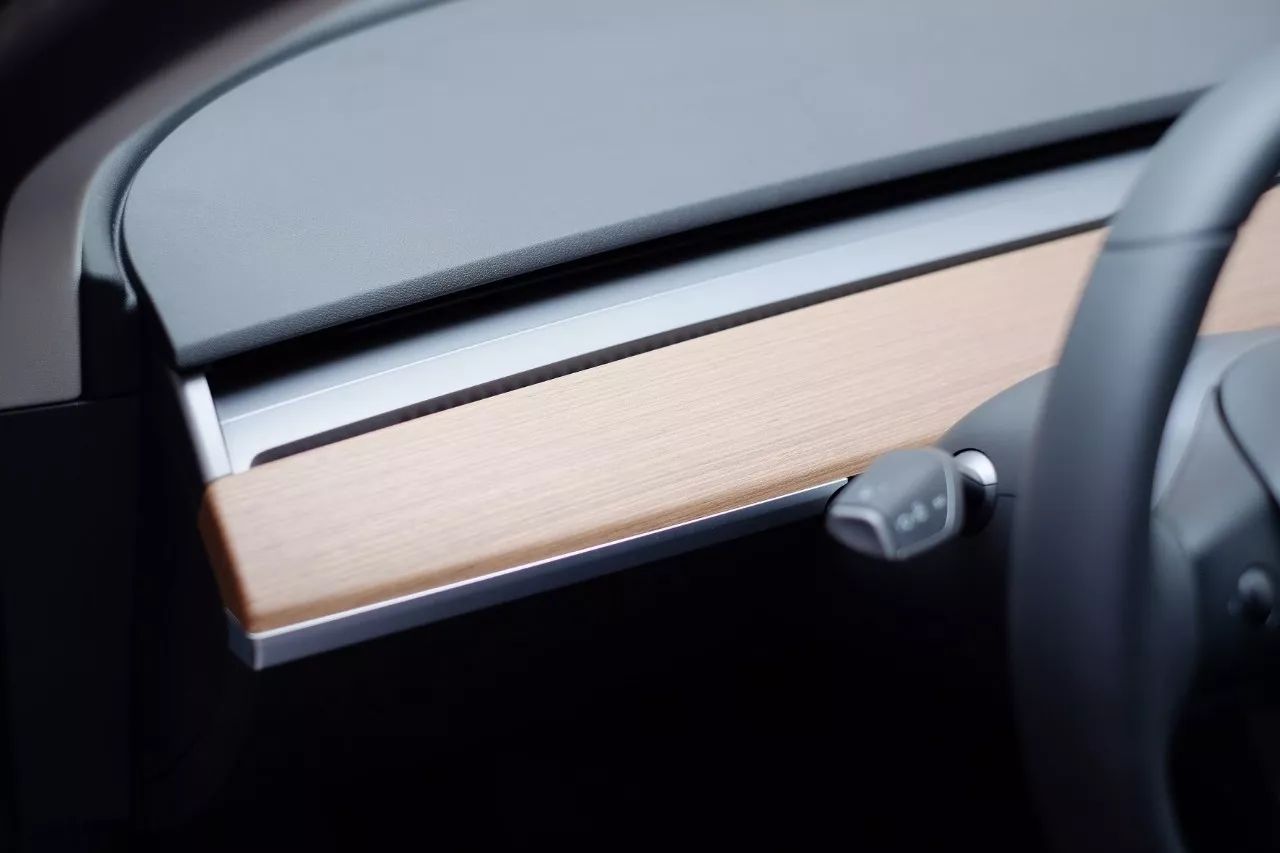
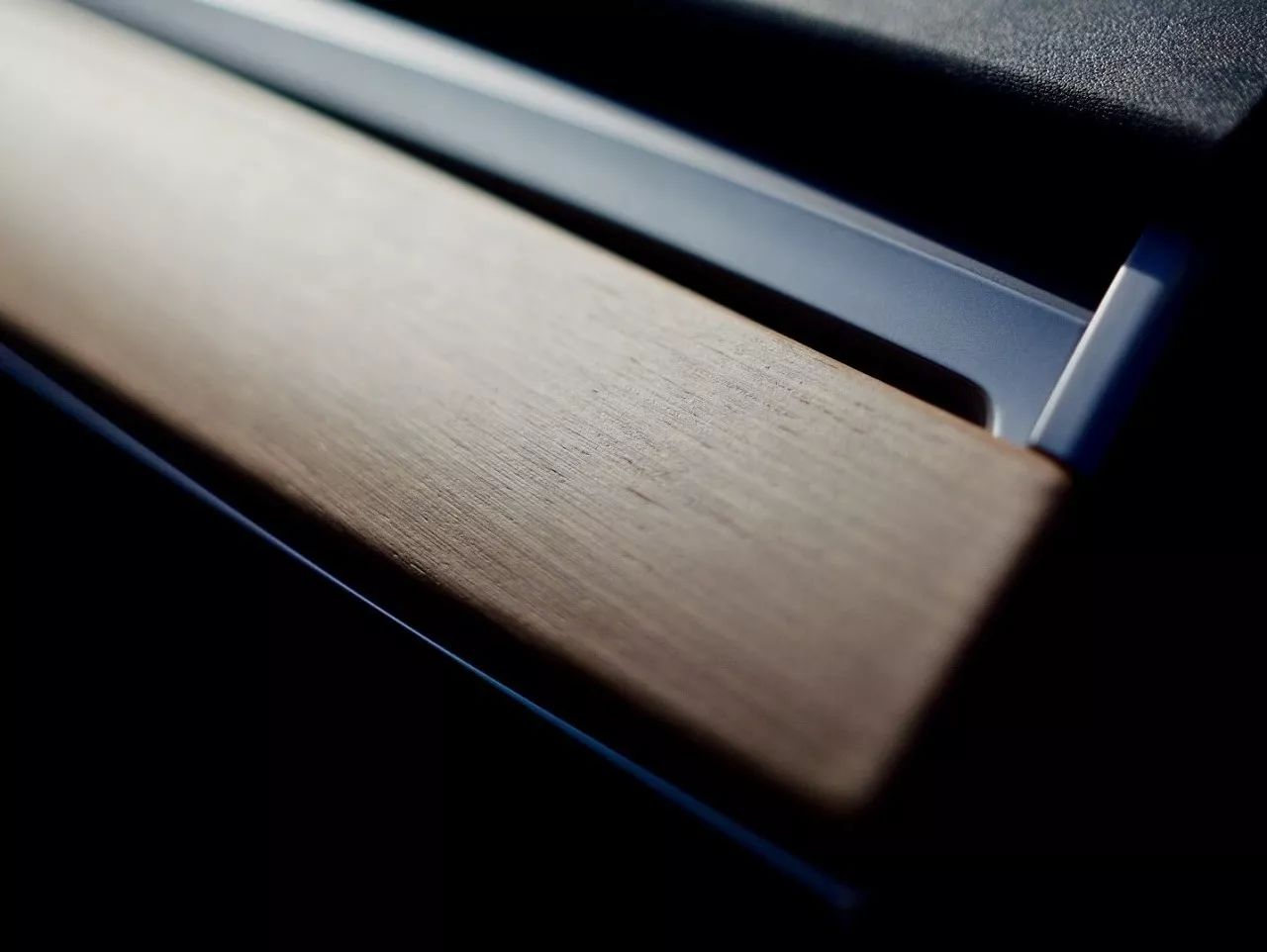
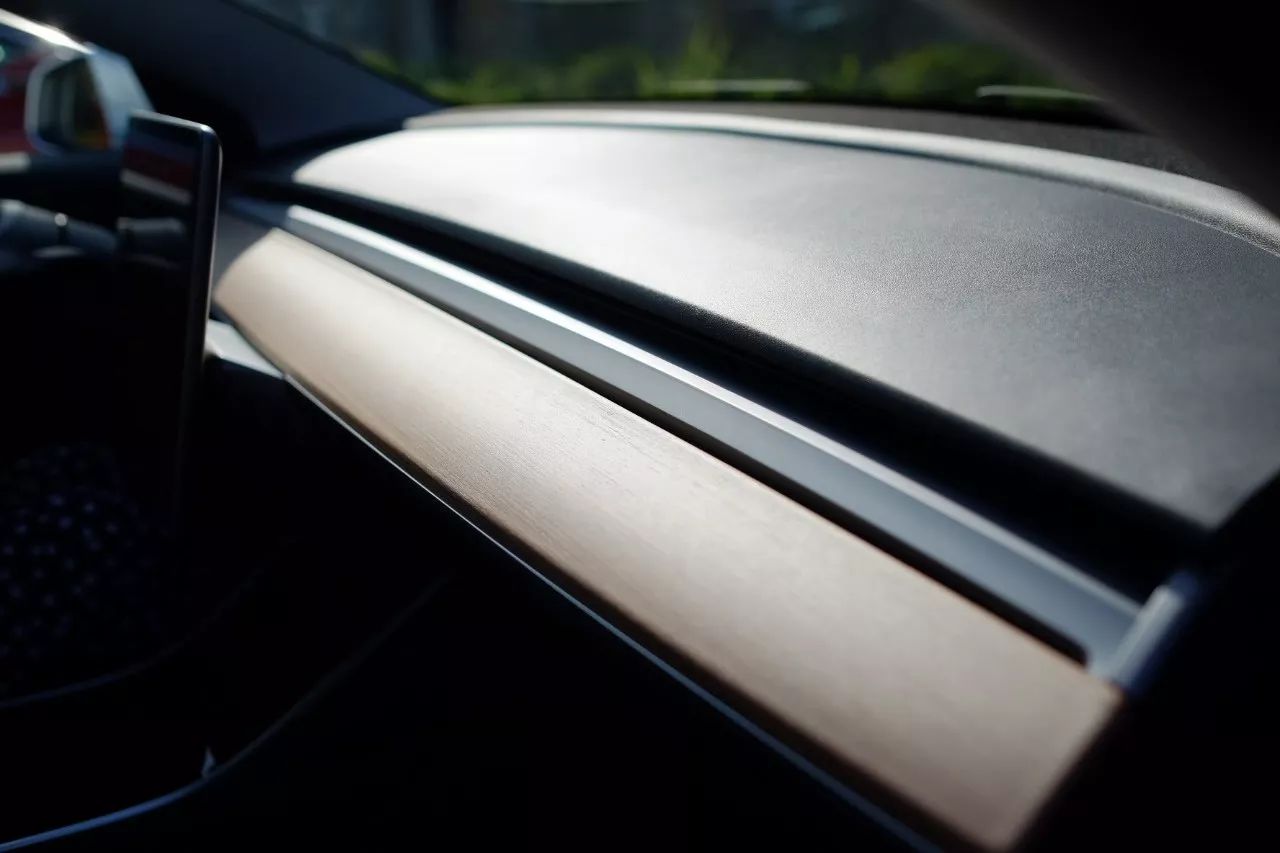
The cup holder is finally integrated into the cabin door, and the door handle has been replaced with an electric button.
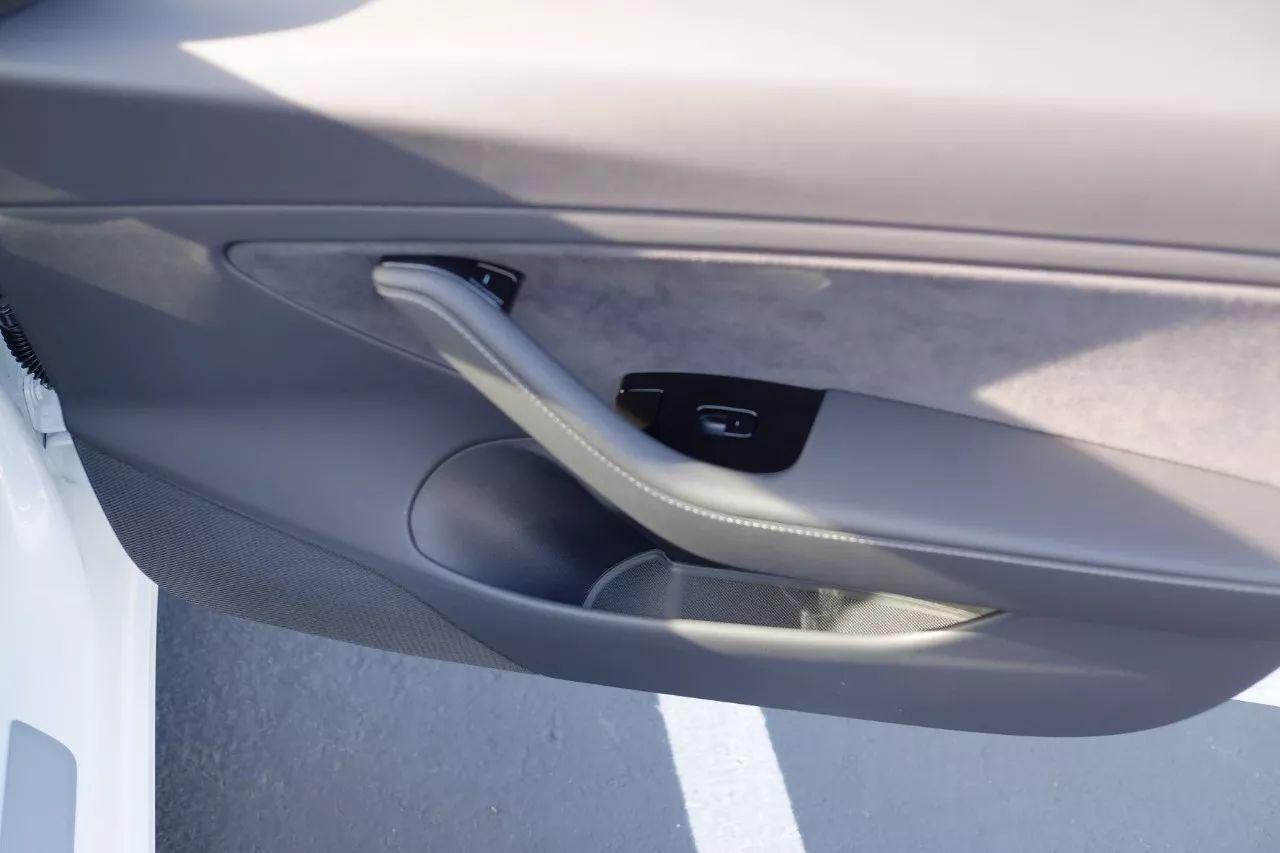
Model 3 uses a lot of faux leather material that I have never seen before. At first glance, it looks like plastic, but when you press it with your fingers, it has obvious elasticity, and upon closer inspection, it has faux leather texture.
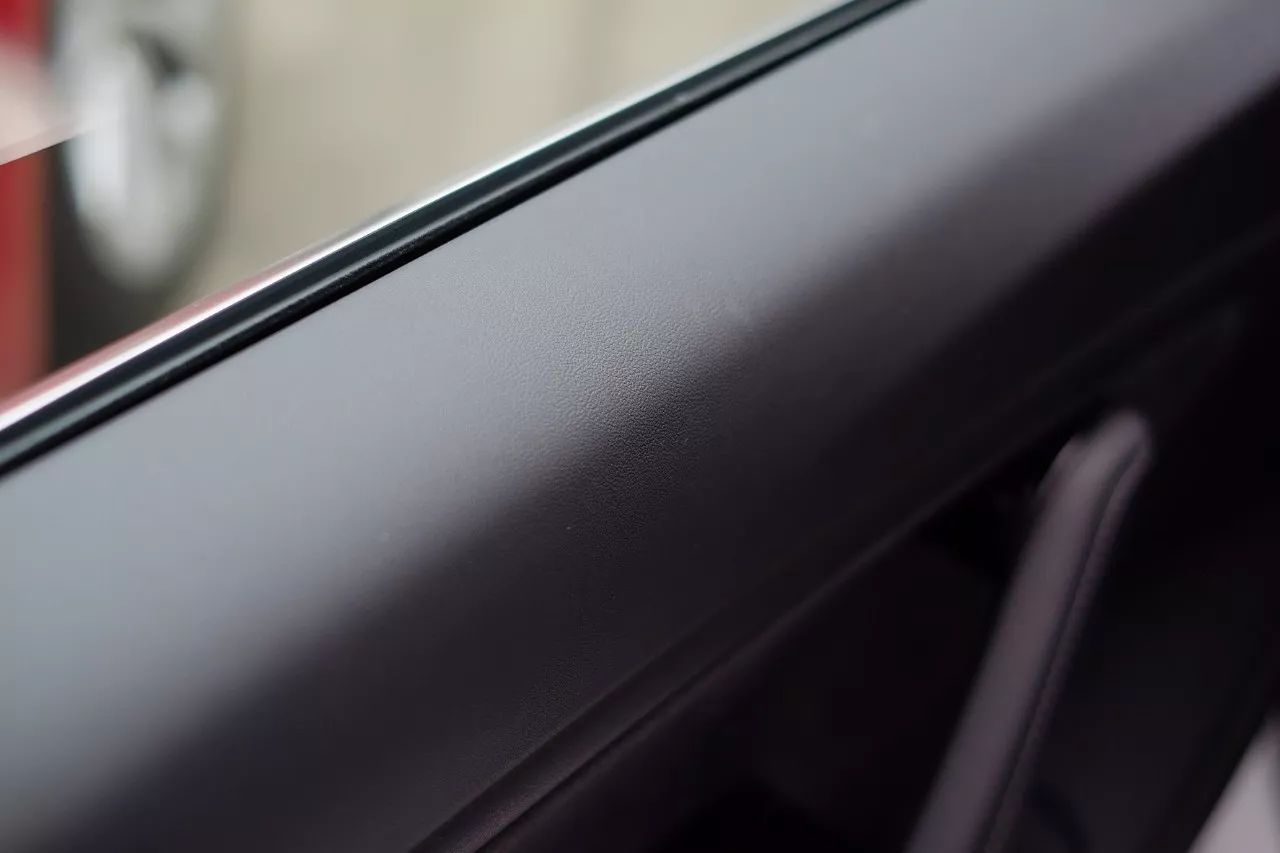
Next, a velvety fabric similar to Alcantara was used, and the hand area used a faux leather material similar to Model S.
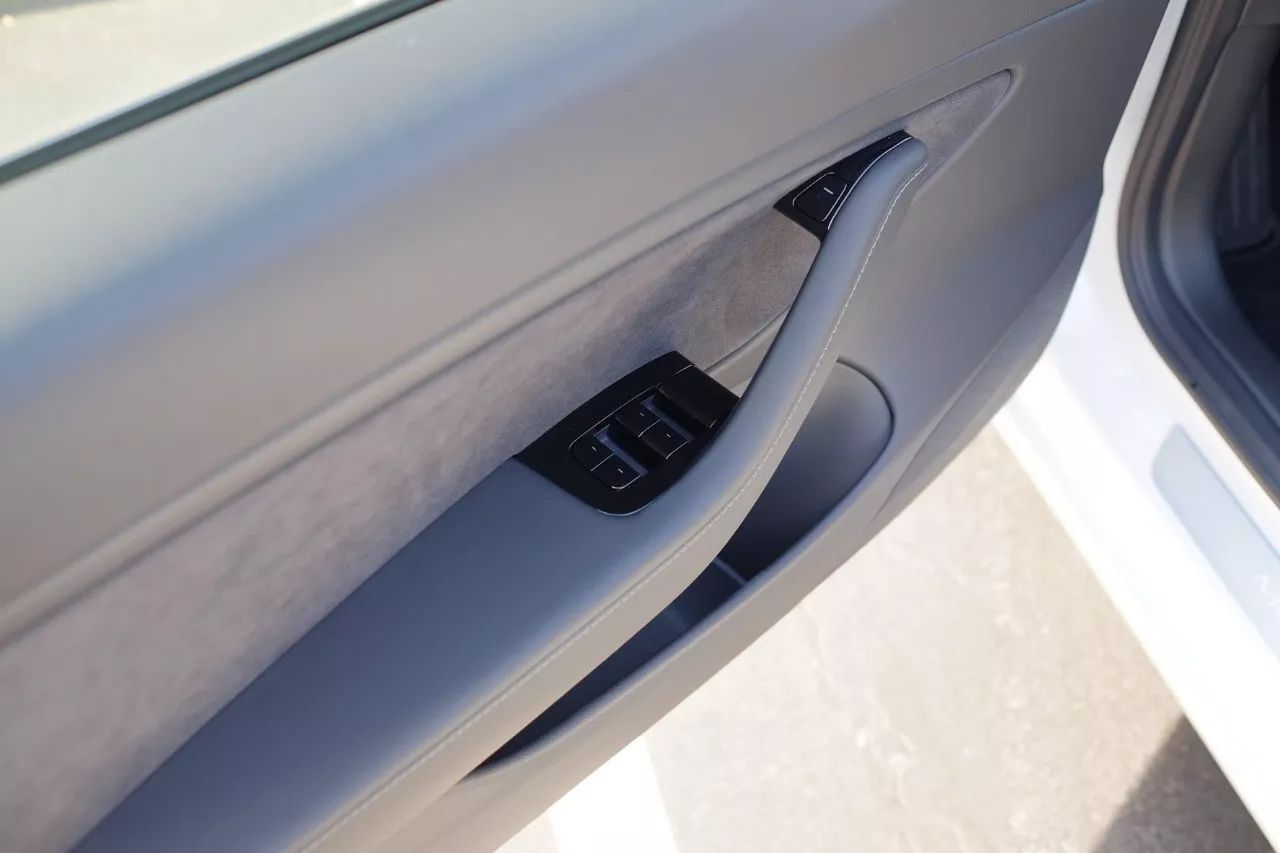
The storage space has also been further optimized.
- Includes a default lightning + USB-C dual charging cable;
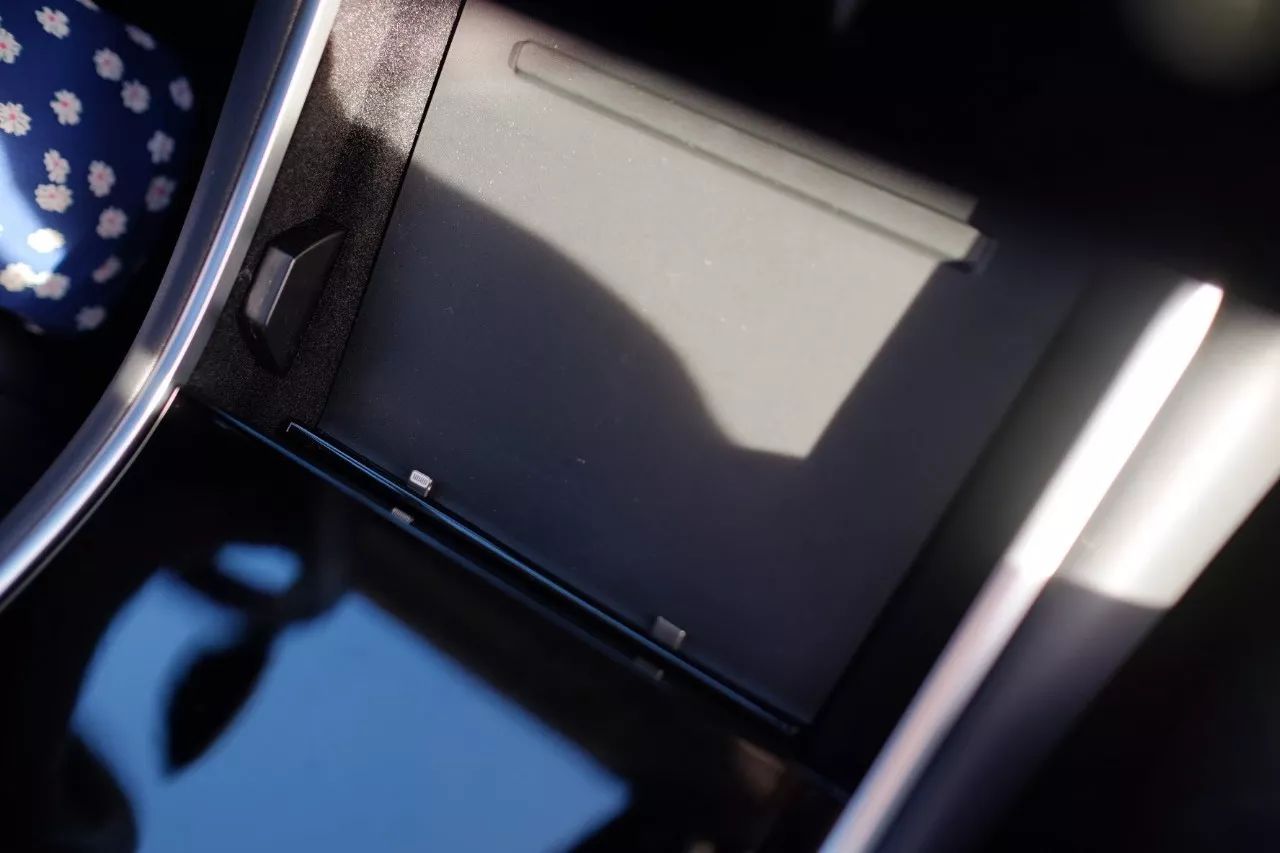
- Opening the lower flap reveals the first storage compartment;
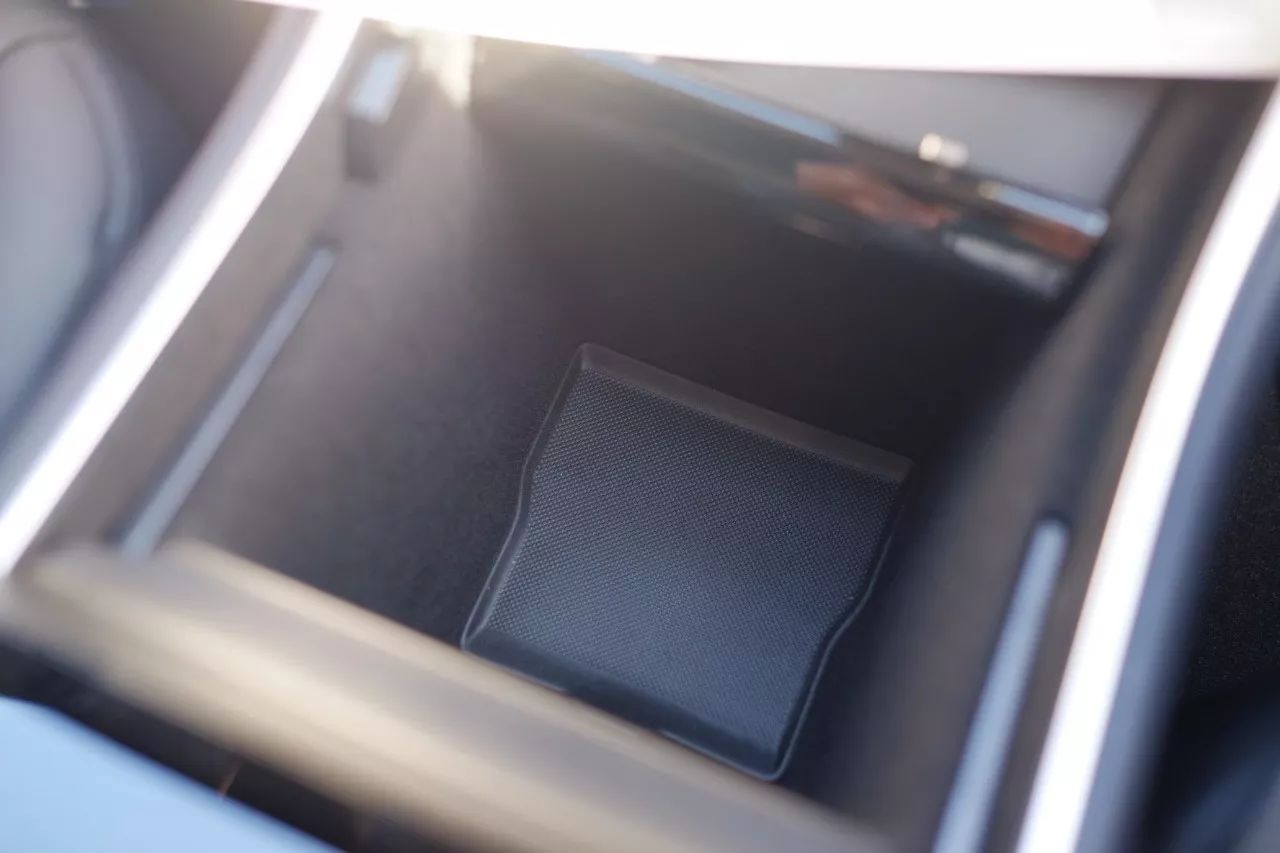
- The armrest can also be opened, and there is a hidden cigarette lighter charging socket inside, which is convenient for additional 12V charging.
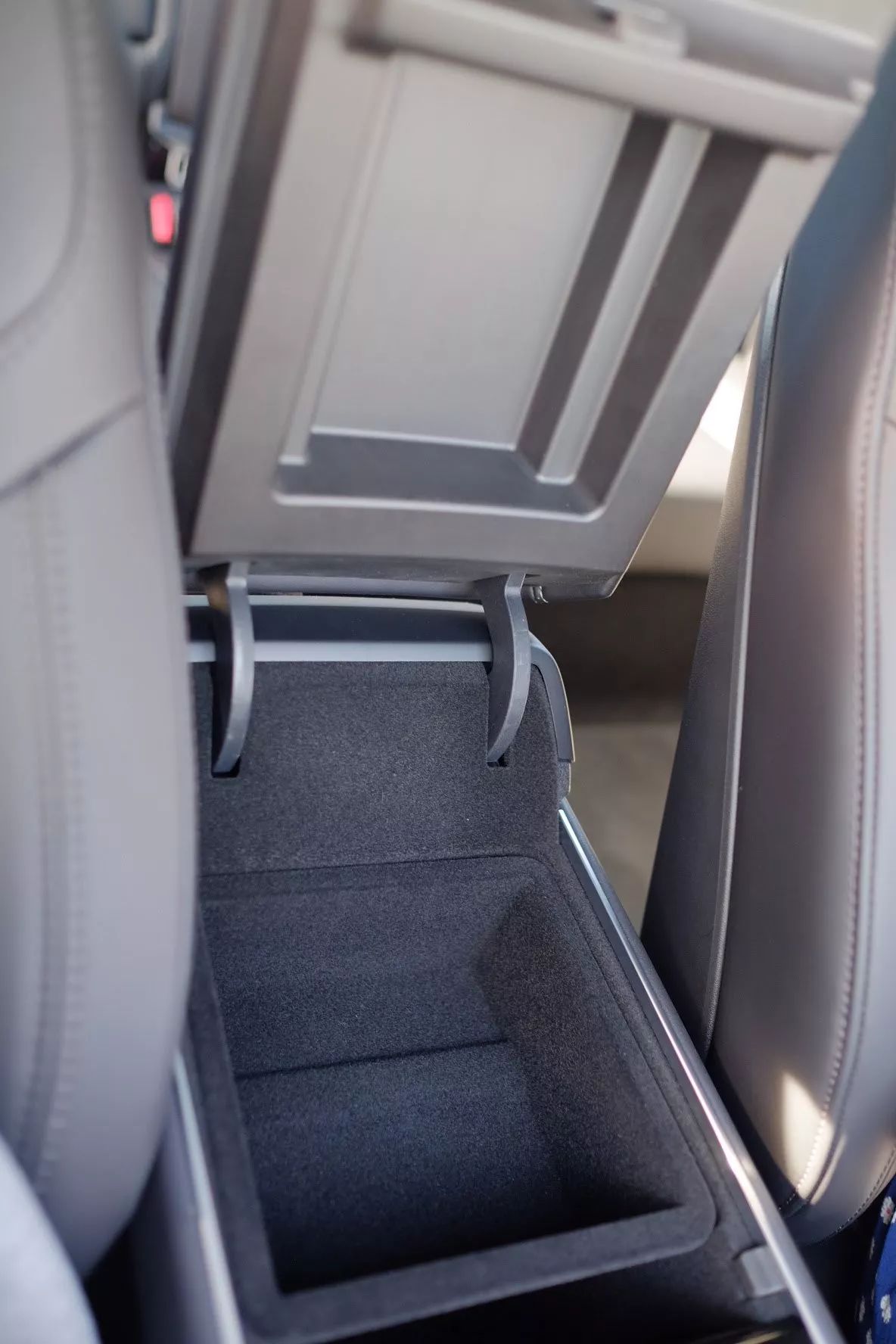
- If Model S is more like a home sedan based on a sports car prototype, then Model 3 is an out-and-out home sedan, including the clothes hanger hooks provided in the rear, two different specifications of child seat locks, and the makeup mirror finally has lights.
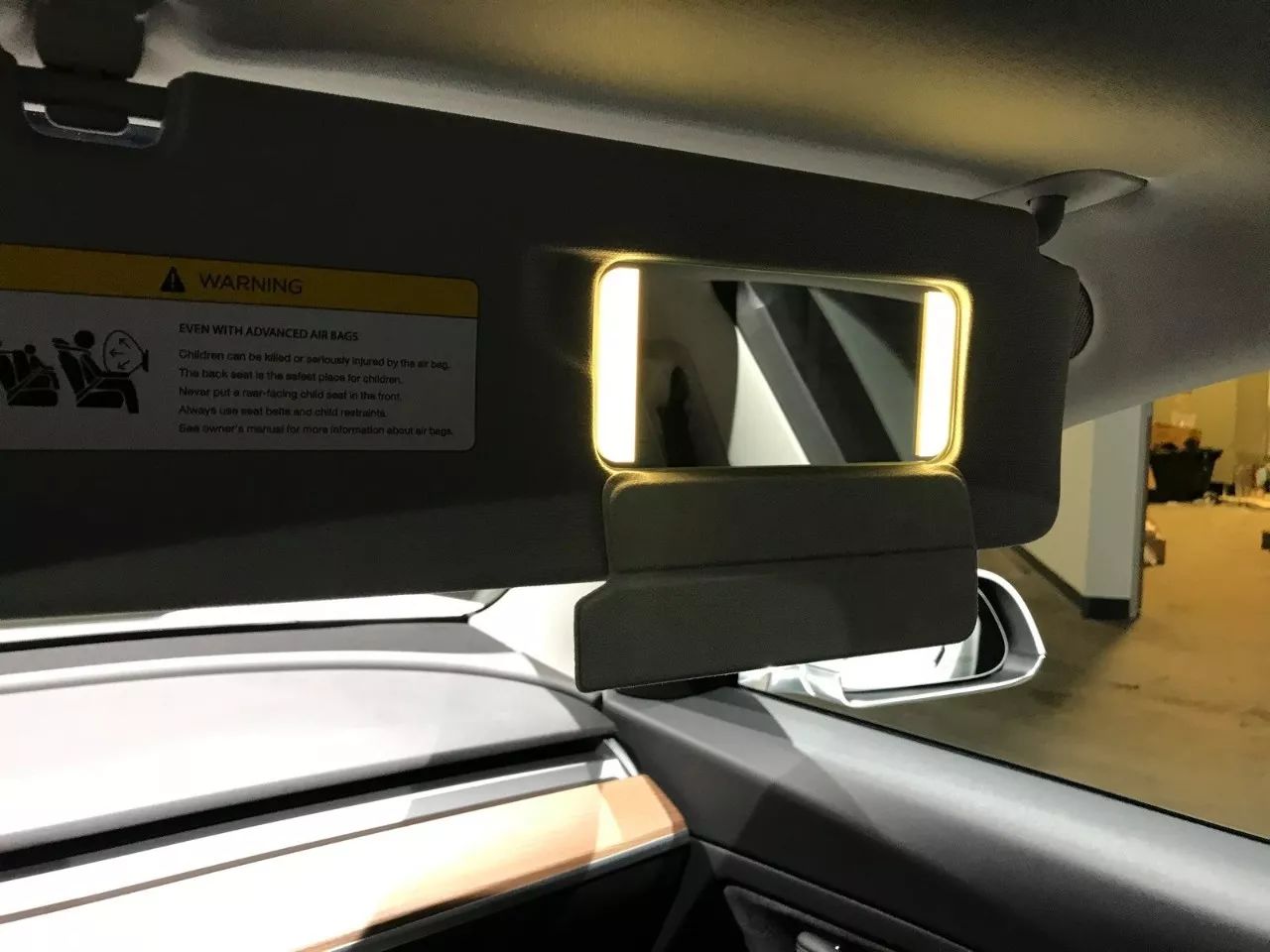
- Full module is also used in the front headlights this time.
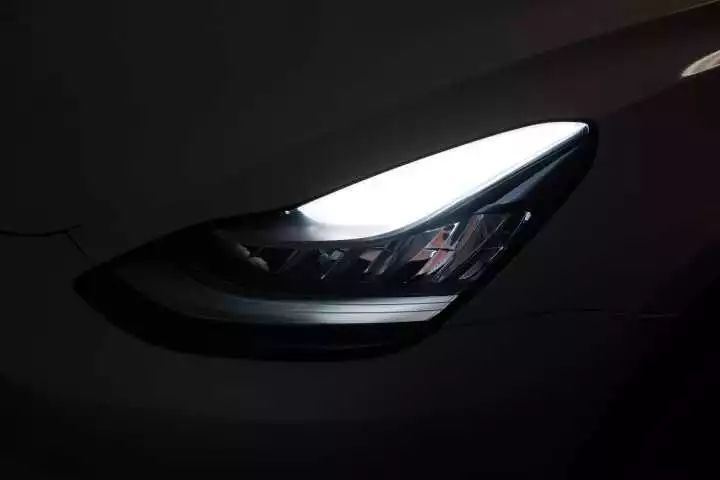
- 19-inch sport tires, actually the default 18-inch Aero is also good.
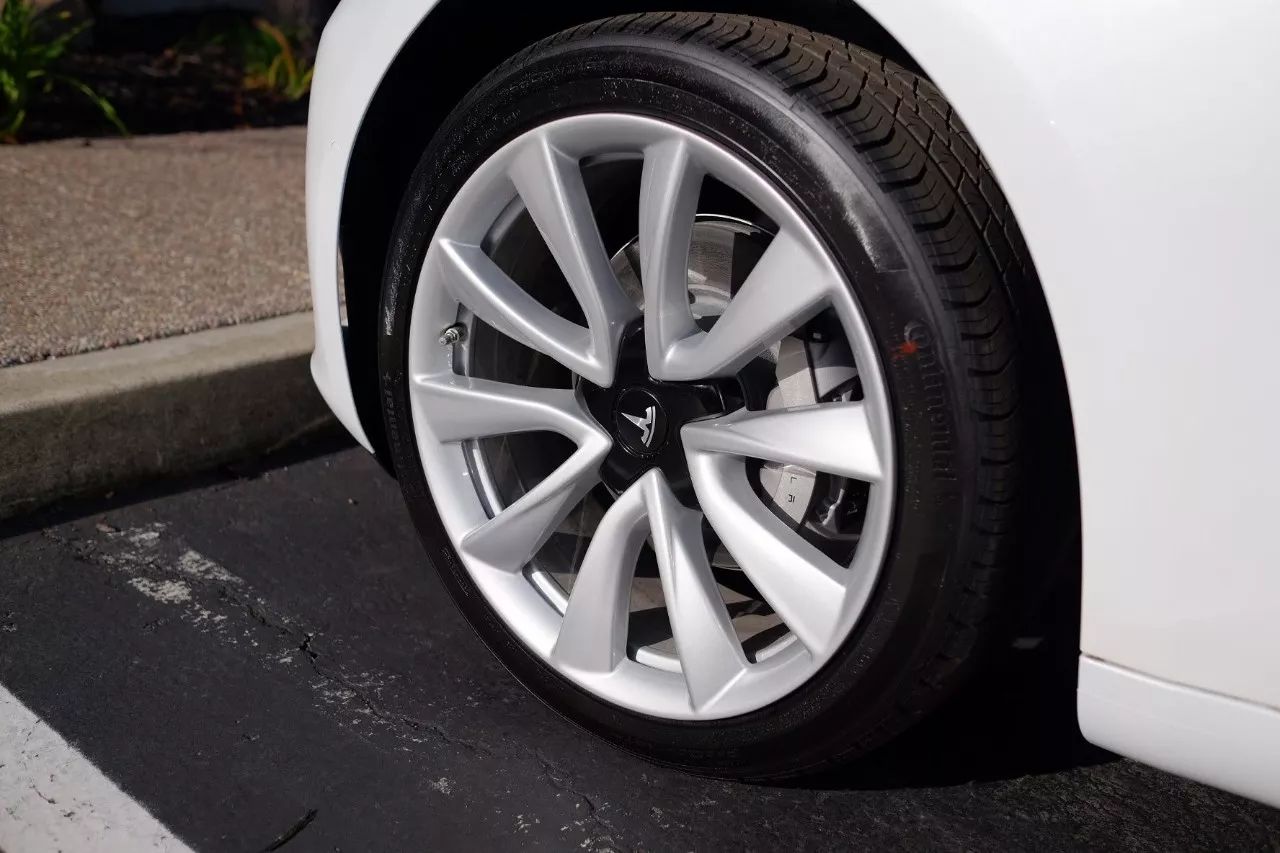
- Charging interface.
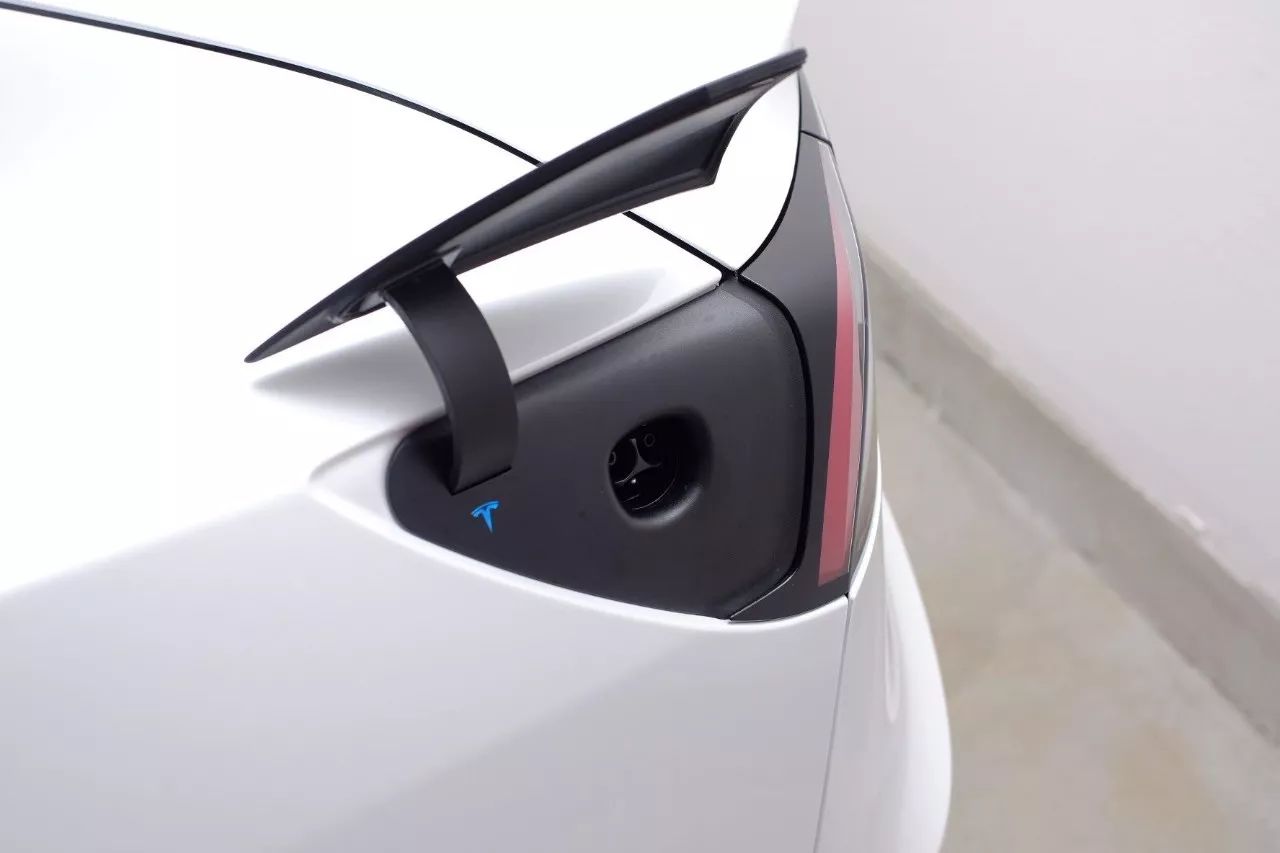
- In addition, RFID cards are used instead of physical car keys for Model 3 this time. In fact, besides this card, mobile phones can also be used as complete car keys, which will be explained in detail later.
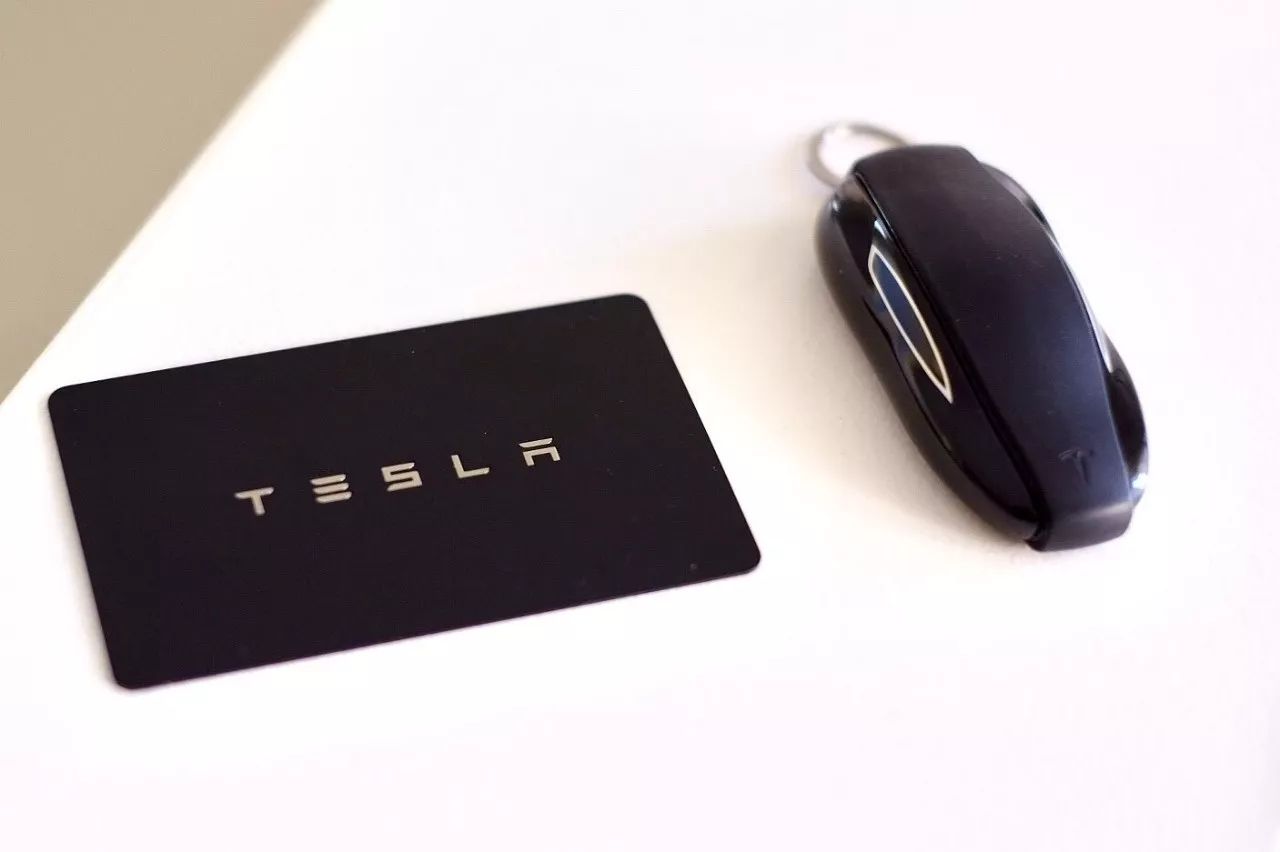
The above is the unboxing part. After driving for a few days, here is a preliminary summary.
Satisfactory parts:
1. Workmanship# Comparison with Model S
The interior of Model 3 has made significant progress compared with Model S. The external seams, interior matching, and panoramic sunroof are all improved while maintaining the quality and reducing the overall price. This is especially valuable.
2. Details
The vehicle pays great attention to the family environment. From many storage compartments to clothing hooks, dressing mirror lights, and other small details commonly found in family cars are all met. Initially, Model S was not very concerned about these details, but now Model 3 has filled these gaps and I believe it can meet the needs of most customers.
3. Extreme energy-saving performance of Model 3
I use TeslaFi to record route and energy consumption data. For a journey with 70% highway and 30% city, this is the energy consumption of Model S:

The average energy consumption per kilometer is 203 Wh.
This is the energy consumption of Model 3:

The average energy consumption per kilometer is only 131 Wh.
It can be seen that, in terms of energy consumption, Model 3 is much lower than Model S. Even with a 75 kWh battery capacity, it is not difficult to achieve a range of more than 500 km.
4. Response of the touch screen
This time, Model 3 uses an Intel CPU. The most intuitive change is that the touch screen response is very fast, far exceeding the Model S which uses the Tegra 2 chip in map zooming, function switching, gesture control, and other aspects.
It is like the difference between an iPhone X with iOS 11 and an iPhone 6.
5. Acceleration Performance
Compared with my previous Model S with a 5.6-second acceleration, Model 3 has further reached the level of 4.8 seconds. The actual experience of the back feeling is very close. It is more than enough for those who pursue starting acceleration and overtaking.
6. Space- The driving space is very spacious. For me, who is used to driving the Model S, the vertical space has increased a lot, the front glass is higher, and the sight is better. The horizontal space has slightly reduced, but the sense of sitting does not have much difference. There is no sense of confinement like an ordinary compact car. The rear space is very spacious, and the inclination angle of the seat is finally aligned with the family car, no longer having the feeling of lying down like the Model S. These are all essential conditions for a family car.
- 7. Lighter and more flexible
Switching from the Model S to the Model 3, the most intuitive experience is that the turning radius is much smaller, and the parking space requirements are lower, which is also in line with this volume positioning.
- 8. Bluetooth and sound system
Originally, the demand for Bluetooth was mainly for listening to music, but occasionally receiving a few calls, I found that the call voice was exceptionally clear, outperforming the Model S and the Bluetooth system I have used in the car, I don’t know if it’s because the premium suite upgraded the sound system or the Model 3 was already optimized in this aspect.
Parts that have an average feeling:
- 1. Enhanced automatic driving assistance
Although the Nvidia Drive PX 2, which claims to have 40 times the performance, is used, the actual automatic driving experience is even worse than the Mobileye solution, and I will discuss this part in detail later.
For the past and present of Tesla’s automatic driving, please refer to: Ryan Woo: The Past and Present of Tesla Autonomous Driving (https://zhuanlan.zhihu.com/p/22413629)
- 2. Bluetooth phone key, RFID key
On the one hand, Model 3 has moved almost all controls to the touch screen. On the other hand, it has also canceled the widely praised analog car key with Bluetooth control. Although the key is good to use, it cannot be used directly like in the past to Summon or open the front trunk. Although these functions are provided in the App, once you encounter a situation without a network, you can only open the door first and then control it in the car.
- 3. Multi-directional scroll wheel
This part can be upgraded through software to provide more adjustment functions. At present, there are not many ways to use it. The left scroll wheel is useless except for adjusting the volume and forwarding and backward songs, while the right scroll wheel is even more pathetic. Except for activating voice control, few functions can be used. Hopefully, software updates can enrich this control interface, apart from the touch screen.
- 4. Software bugs and missing features
Currently, the software part of the Model 3 has not fully realized all the functions of the Model S, such as travel power consumption records, power-saving mode, Chill mode, etc., and even WiFi and rear seat heating functions have not been activated.5. Mediocre Driving Experience
Unlike the huge steering wheel of Model S, the steering wheel of Model 3 is a bit small and the assist is weak. It requires more effort to turn the steering wheel. When driving Model S, I was obsessed with the heavy feeling of steering, like a sensitive fat man.
On the other hand, Model 3 is more like an ordinary mid-size car, and when turning sharply, the feeling of floatiness returns, lacking the unique solidity of Model S. It’s hard for me to say whether it’s because I haven’t used Model 3 long enough, or I’m too used to Model S and have a natural aversion to the driving experience of Model 3. This part will be left for later discussion.
Dissatisfactory Parts:
1. Information Display on the Center Screen
Sacrificing the driving part of the screen and concentrating all controls on the center control is my biggest adaptation problem.
As a veteran Tesla driver, you should know how perfect the Model S instrument panel is.
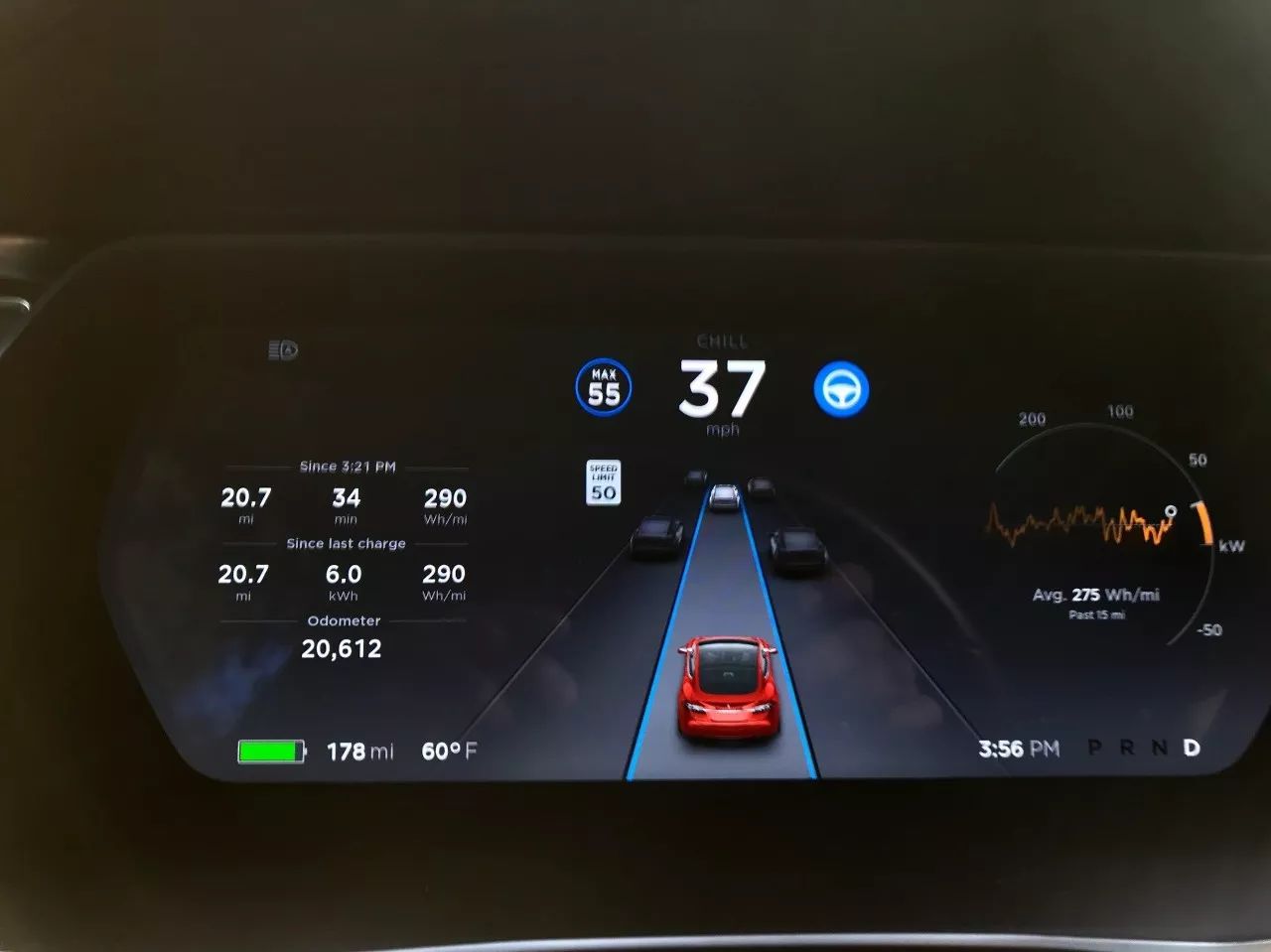
The center is your car and the surrounding area is the perception of other cars. The bottom shows the road, and you can easily and intuitively see the current status and if there are any obstacles. The condition of the vehicles around is also shown.
Model 3 has been simplified to the extreme.
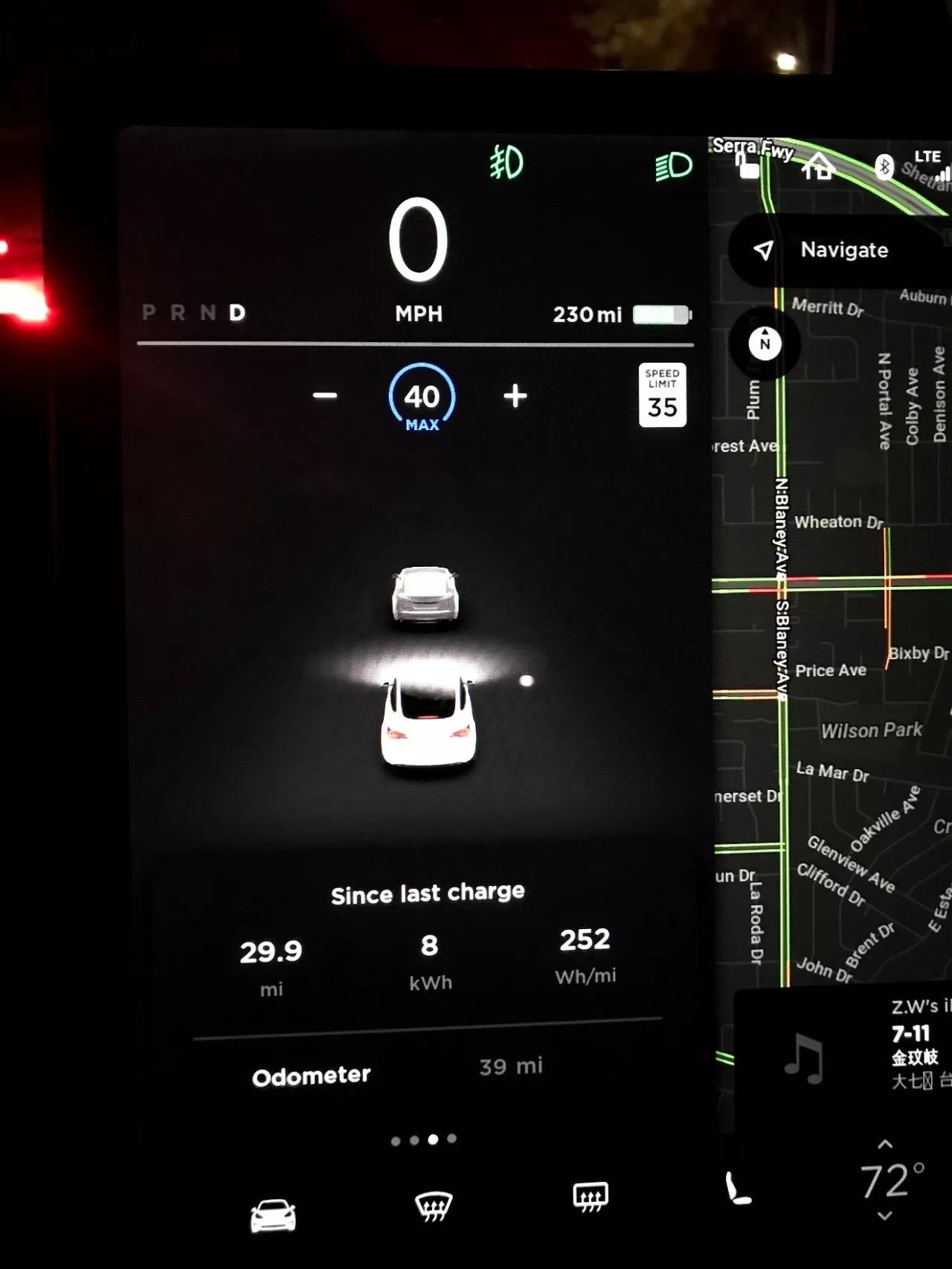
Not only has the information been significantly reduced, but you also have to turn your head to look at the screen.
This interface also interferes with GPS navigation information acquisition. When driving, the GPS map is on the right side of the screen, and the most critical path prompt has been moved to the far right, making it impossible to see without turning your head.
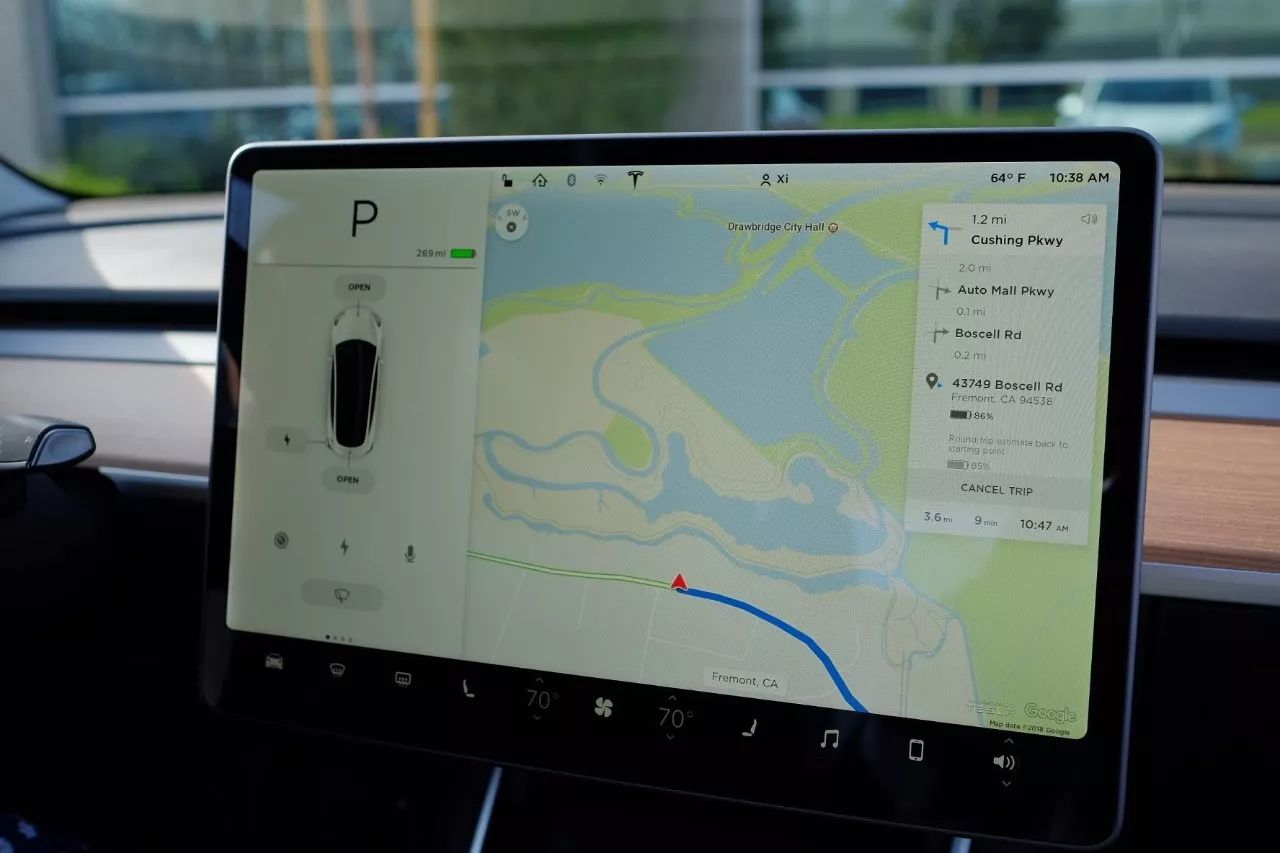
2. Integrated Autopilot and Gear Shifter Lever
As a veteran Tesla user, you must know that the autopilot function in S and X is implemented through independent levers. Pushing up and down can separately increase or decrease the current speed. However, in Model 3, cruise control and gear shifting are controlled by the same lever. If you want to increase or decrease the speed, you have to use the touch screen, which is very inconvenient and dangerous.Actually, Tesla only needs to update the firmware of the multidirectional scroll wheel on the steering wheel to achieve similar control. However, at present, there is no good optimization of the human-machine interaction for cruise control and automatic assisted driving.
3. Rearview Camera
I don’t know if it’s because of cost issues, but the quality of the Model 3 rearview camera is very poor. Compared with the clear rearview cameras of Model S and X, the camera of Model 3 gives a feeling of going back to ancient times. Although the transmitted screen is large, the clarity is very poor and there are many jagged edges. The viewing angle is severely distorted, almost approaching a fisheye lens, and there is a lot of noise at night.
It’s hard to understand how such a simple camera can contribute greatly to material costs. If such poor quality is due to price issues, it’s definitely a step back.
Conclusion
Actually, most of the above-mentioned problems can be solved one by one through OTA software updates. However, considering that Model 3 has already entered a large-scale production track, Tesla has very little time left to perfect it. Compared with the first batch of Model 3 received by Tesla’s employees and old users, ordinary users may not have that much patience for Model 3.
In addition, Tesla’s four main pillars are:
Electric, Supercharging station, OTA upgrade, Automatic assisted driving and even full autonomous driving
Model 3’s electric driving experience is relatively outstanding, but it does lose some of the unique charm of Model S.
The deployment of Supercharging stations is still steadily progressing. At least from the current perspective, it’s quite good for long-distance travel. However, the upgrades in charging power and automation are still far away from being realized.
From the replacement of enhanced automatic assisted driving in November 2016 to now, it has been more than a year, but the actual experience is really unworthy of this “enhancement”. There are eight cameras on the car, but only half of them are activated, and full autonomous driving is still far away. Perhaps initially, Elon Musk really thought that full autonomous driving could be achieved in 2018, so the problems mentioned above regarding UI and the single central screen could be bypassed with full autonomous driving.
Unfortunately, reality is not imagination, nor can it be changed by personal distortion of force. On the road to full autonomous driving, we still have to rely on our hands or automatic assisted driving, so please optimize the UI and interaction of this part.
In summary, did Model 3 fulfill Elon Musk’s original promise?
I think most of it is fulfilled: an electric car with only half the price of Model S, aimed at a large number of ordinary users, it did achieve it, and it was mass-produced as scheduled, which must have left a deep impression on friends who experienced the difficulties of the Model X.We put aside the upgraded package with luxurious features, automatic assisted driving and other additional functions. This is still an electric car that accelerates 5 seconds and has a full range of 350 kilometers.
The design of Model 3 is indeed too avant-garde, but there is no decisive flaw. Instead, I see more potential: if Tesla fulfills its promise of fully automatic driving in the next two years, and with the $10000 software unlock, you will immediately have a fully automatic electric car. This promise is truly unique.
Let’s go back to the first sentence of this article:
It was not until I stepped on the accelerator of the Model 3 that I suddenly realized: I had never test-driven the car I had just purchased.
In this world, only Elon Musk can make me feel at ease to spend this money to buy a car that I have never test-driven.

-
Unveiling the Complete Configuration Table and 11 Doubts of Tesla Model 3
-
OCDetailing: Model 3 test drive review video (with Chinese subtitles)* Global First Tesla Model 3 Deep Test Drive Report

This article is a translation by ChatGPT of a Chinese report from 42HOW. If you have any questions about it, please email bd@42how.com.
